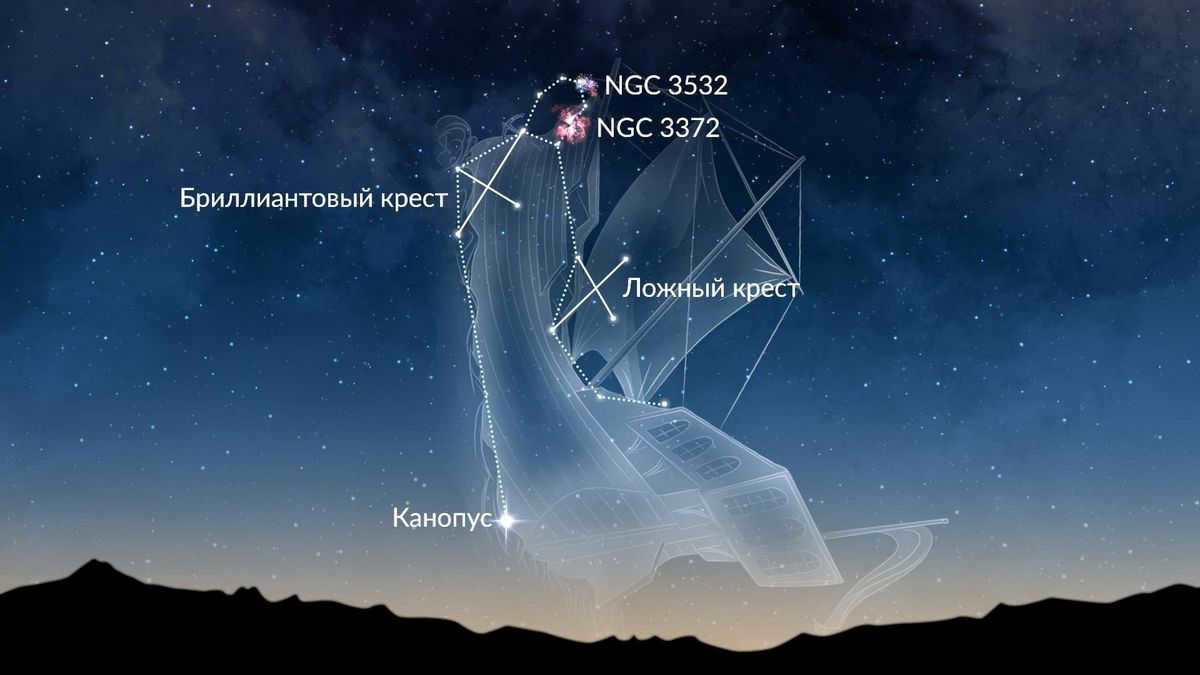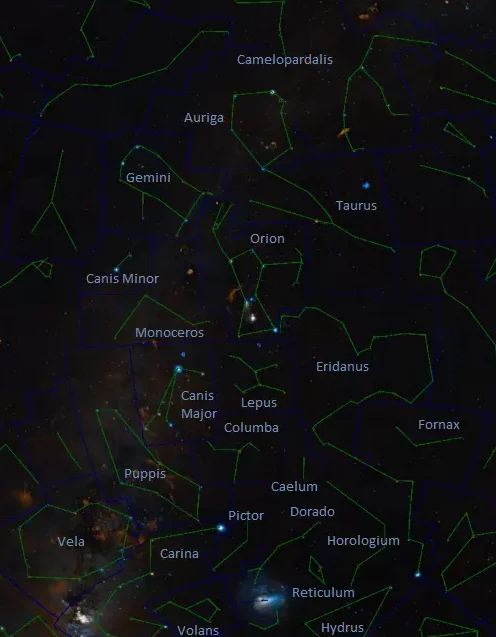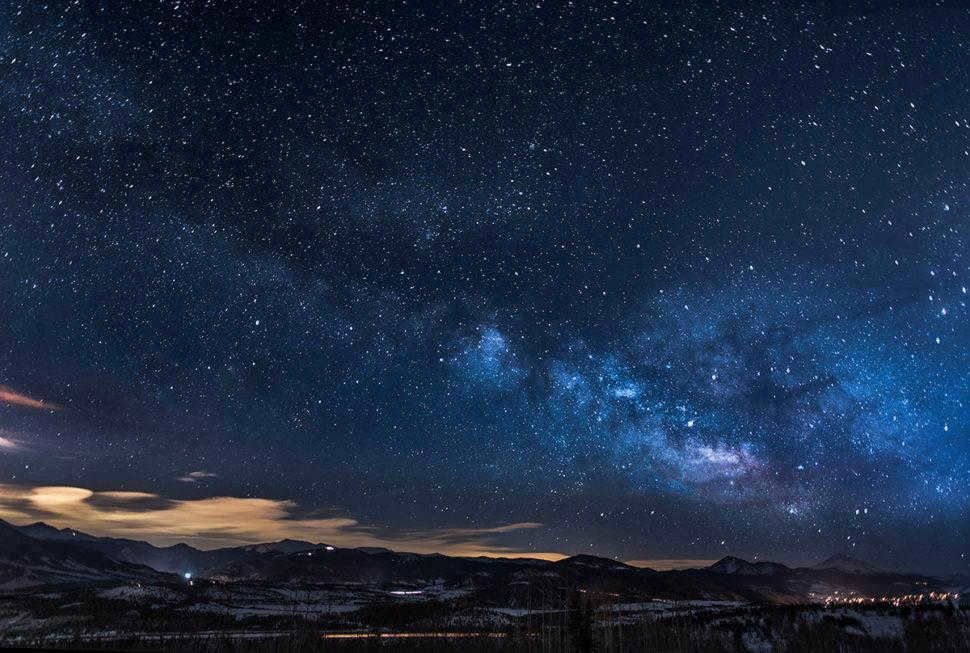
During the final month of winter, you still have the opportunity to witness the magnificent winter constellations, which are at their most visible during this time. Assuming the weather in February is favorable, you can gaze into the vast depths of space during the late evenings and nights. This month offers a chance to observe constellations and star clusters in the night sky that are particularly prominent in winter, with February being a prime time for their visibility.
Winter Constellations
Check out the table below for a compilation of the names of the winter constellations visible in the night sky of both the Northern and Southern Hemispheres. The constellations are grouped according to the month they are most prominent in.
The constellations are identified by their positions in the sky: C – Northern Hemisphere; S – Southern Hemisphere; E – Equatorial region
| Aries (S) | Chisel (S) | Ascendant (S) |
| Whale (E) | Goldfish (Y) | Giraffe (C) |
| Eridanus (Y) | Table Mountain (Y) | Big Dog (Y) |
| Furnace (Y) | Orion (E) | Dove (Y) |
| Clock (Y) | Grid (Y) | Gemini (S) |
| Southern Hydra (S) | Taurus (C) | Hare |
| Perseus (S) | Unicorn (E) | |
| Triangle (C) | Painter (Y) |
When you cast your gaze towards the eastern sky, you will be greeted by the magnificent sight of the Big Dipper making its way towards the zenith. Below this celestial giant, you can also spot the constellations Hound Dogs, Volopassus, and the Northern Crown. If you shift your attention to the left, in the northeast, you will find the constellations Hercules and Lyra. And to top it all off, hovering above them all is the majestic Dragon’s Head.
Northward Bound
In the northern part of the sky lies the constellation Cepheus, with its neighboring Cassiopeia on the left and the Swan on the right, near the horizon. Towards the northwest, one can observe the prominent Ascendant and the formidable Taurus, with Perseus finding its place to the right of them. Below them, bending towards the horizon, is the constellation Andromeda. Moving towards the west, Aries takes its place, while the constellations of Cetus and Pisces are slowly descending.
The Southern Sky
Gazing towards the southern direction, one’s eyes are met with the presence of Leo, a prominent zodiac constellation, accompanied by its brilliant star, Regulus. To the east, the gentle Virgo can be observed, joined by its bluish and clear star, Spica, as it rises. Positioned just to the left of Virgo lies the cluster of stars known as Volopassus, featuring the vibrant and fiery star, Arcturus.
Turning towards the southwest, the sight of Gemini and the constellation of the Lesser Dog brings delight. Nearby, the Unicorn resides with its somewhat unremarkable stars. East of Gemini, Cancer appears, with Hydra, stretching far to the south and east, lying below it. Along the very edge of the horizon, in the constellation of the Big Dog, the magnificent Sirius sparkles, accompanied by the enigmatic conjunction of stars belonging to Orion, positioned to its right.
The Sun
can be paraphrased as
The Star at the Center of the Solar System
.
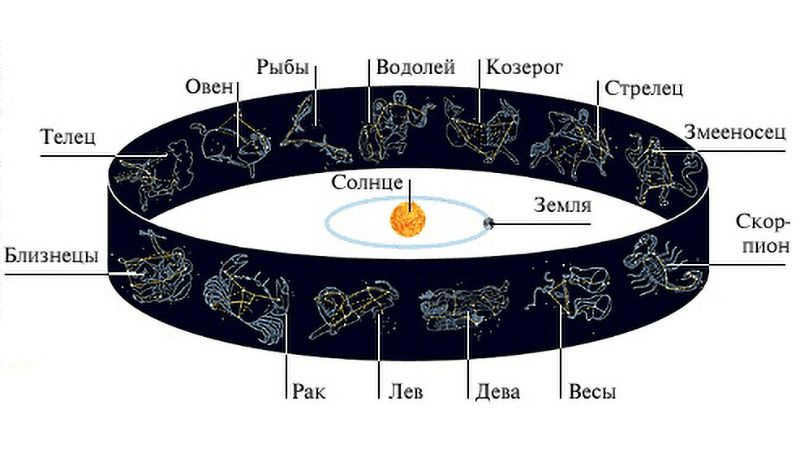
The Sun will remain in the constellation of Capricorn until February 15th, at which point it will move into Aquarius. Throughout the month of February, we can expect the days to gradually become longer, with the length reaching 10 hours and 38 minutes at the latitude of Moscow by the end of the month. The Sun will also reach its highest point in the sky in February, peaking at 27 degrees.
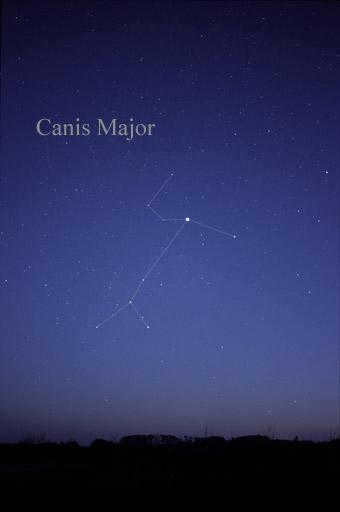
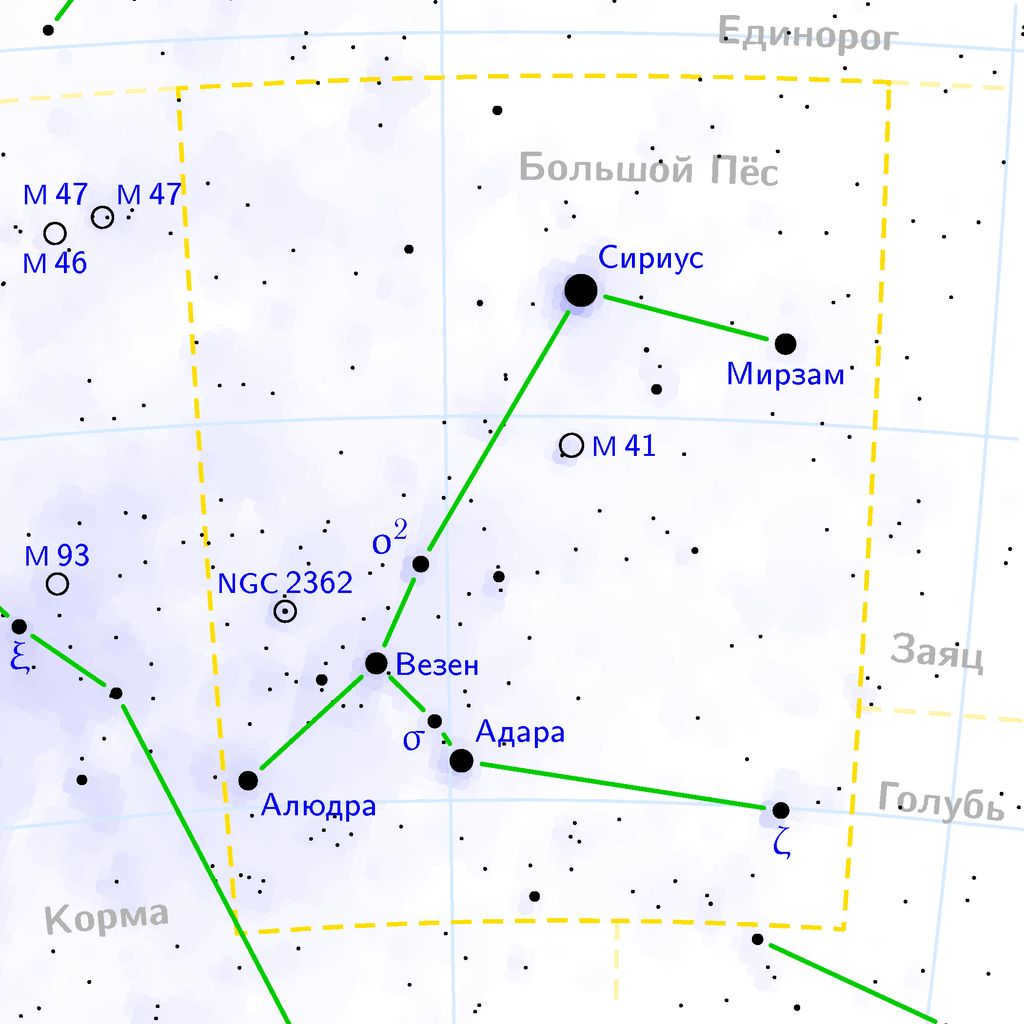
The area of the sky that contains the Big Dog constellation can be located in the southeastern region. Its brightest star, Sirius, is actually a binary system. Sirius A is a giant star that emits a blue-white light, while Sirius B is a dimly glowing white dwarf. These two stars revolve around each other. There is a belief that there may be a third component, although it has not been discovered yet.
Adhara, the second brightest star in the Big Dog constellation, is also composed of two objects. It is known for being the most potent source of ultraviolet radiation in space. VY, another star in the constellation, is a red giant and one of the largest stars known. It shines 270,000 times brighter than the Sun. In terms of stellar age, VY is relatively young, being only 8.2 million years old. However, it is expected to have a short lifespan and will likely explode as a hypernova. This event would be 100 times more powerful than a supernova explosion.
The WR 7 star stands out for being located within a massive gas bubble that is disturbed by the star’s radiation.
Among the celestial bodies in the constellation Canis Major, there exists a small galaxy known as the Superdense Canis Major. This uniquely shaped galaxy is a companion to our own Milky Way and hosts over 1 billion stars, including numerous red giants.
The Hunter Constellation – Orion
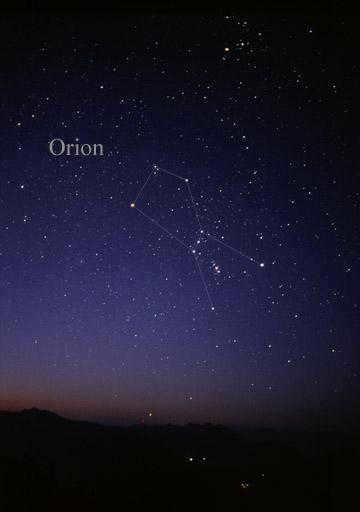
Located to the northeast of Canis Major is the constellation Orion, which stands out as one of the most prominent constellations in the night sky. Among its stars, the brightest one is Rigel, a dazzling blue-white supergiant. At first glance, Rigel appears to be a solitary star, but in reality, it is a complex system comprised of four distinct objects. The primary star within this system exhibits variable brightness, reaching a peak luminosity that is an astounding 363,000 times greater than that of the Sun. Not only does Rigel surpass the Sun in brightness, but it also exceeds it in size, boasting a radius that is 7000% larger. As time progresses, Rigel will continue to expand, eventually culminating in a momentous supernova explosion.
Another notable star in the constellation Orion is Betelgeuse, a striking red supergiant. What sets Betelgeuse apart is its vast nebular envelope, which envelops the star and spans a staggering 250 times its size. This envelope formed gradually as Betelgeuse shed its mass and gradually cooled over time.
Alnitak releases ultraviolet radiation into the nebula, dislodging particles from the hydrogen gas within the Flame. The interaction of these ionized particles results in the emission of a radiant glow from the nebula. The Flame Nebula, among other celestial formations, is a constituent of the Orion Molecular Cloud Complex.
Petite Canine
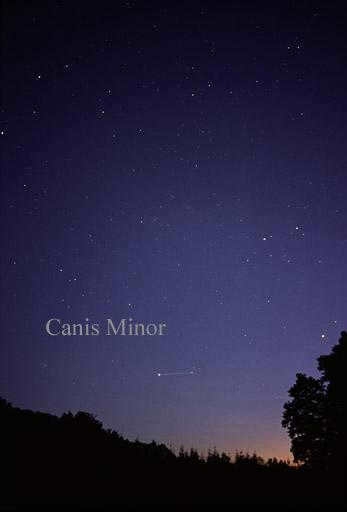
If you draw a straight line connecting Betelgeuse in Orion and Sirius in the Big Dog, you will create the right side of the Winter Triangle, with Procyon in the Little Dog as the third vertex. The Winter Triangle can only be seen from November to March.
The Little Dog is positioned above the Big Dog, and both constellations appear to trail Orion. The best time to observe the Little Dog is during the late evening hours. The brightest star, Procyon, is actually a binary star system composed of a white main star and a faint white dwarf.
While the Milky Way passes through the majority of the Little Dog, there are very few nebulae and galaxies present in this constellation.
Mythical Creature: The Unicorn
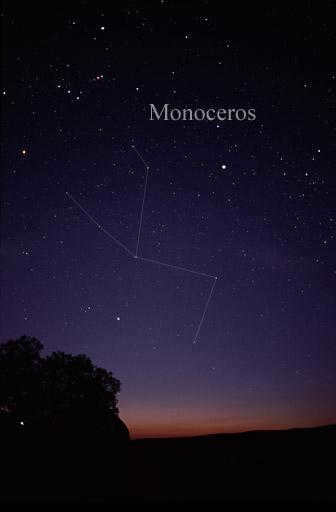
Located within the Winter Triangle, which is formed by Betelgeuse, Sirius, and Procyon, lies the Unicorn constellation. Unicorn may not possess exceptionally luminous stars, but it does boast a collection of captivating celestial entities. One such entity is the binary system V616, consisting of a star and a black hole. This black hole draws in matter from its companion star, resulting in the emission of visible light and X-rays. Moreover, the Unicorn constellation is home to several fascinating deep space objects, including the Christmas Tree star cluster, the Cone Nebula, the Rosette Nebula, the Hubble Variable Nebula, and numerous others.
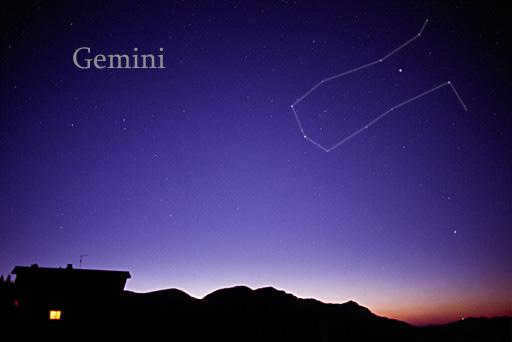
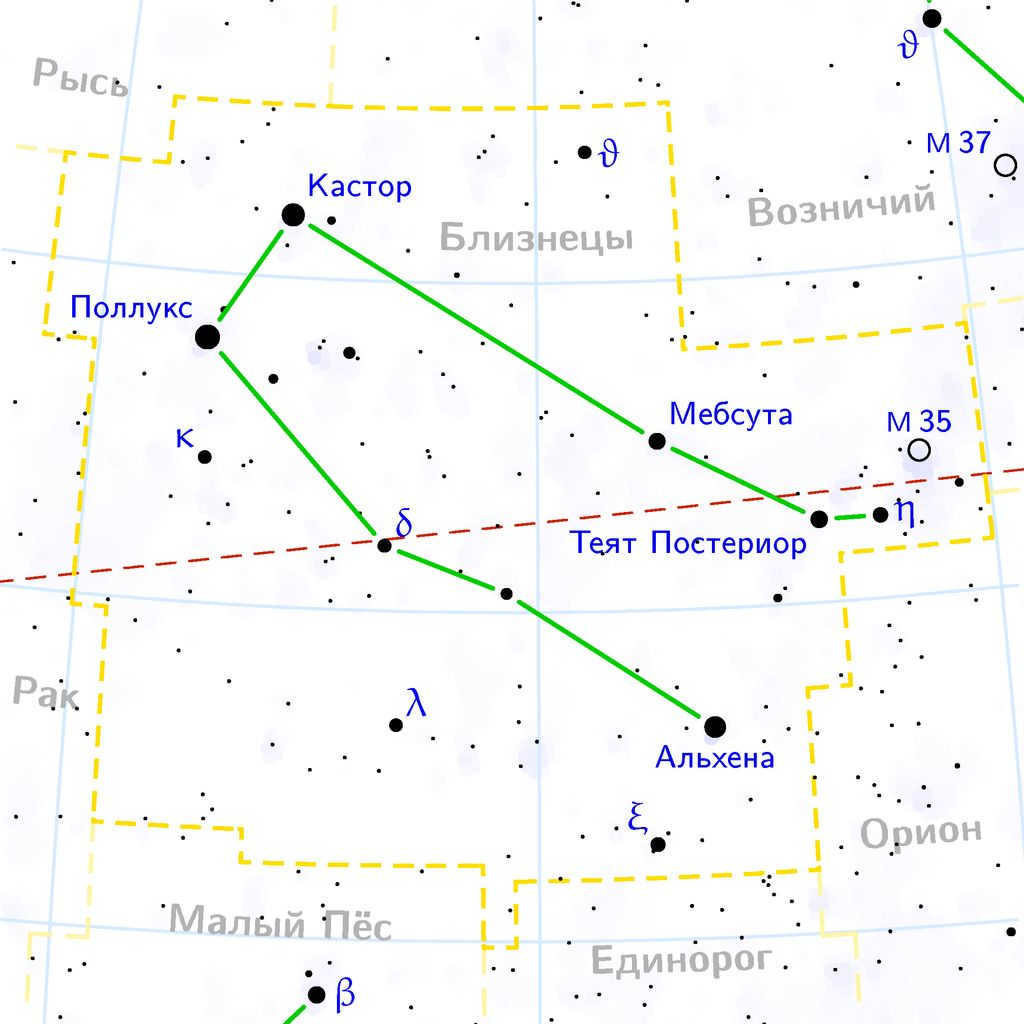
To the north of Orion lies the constellation Gemini. The most prominent star in this constellation is Pollux, an orange giant. Castor, another bright star, is actually made up of six objects. Mebsuta, a yellow supergiant, has a mass that is 1920% of the solar mass and a radius that is 14000% of the solar radius. In Gemini, there are many giant and supergiant stars.
Gemini is also home to the Eskimo Nebula, which bears a resemblance to a human head. This nebula consists of a double gas shell that was once part of the outer layers of a star similar to the Sun.
Another nebula in Gemini is the Medusa Nebula, which is the remnant of a star that failed to undergo a supernova explosion due to insufficient mass. Instead of an explosion, the nebula is gradually dissipating its gas and dust. This process will continue until a neutron star or pulsar forms at the center of the nebula.
The hexagonal shape known as the winter circle
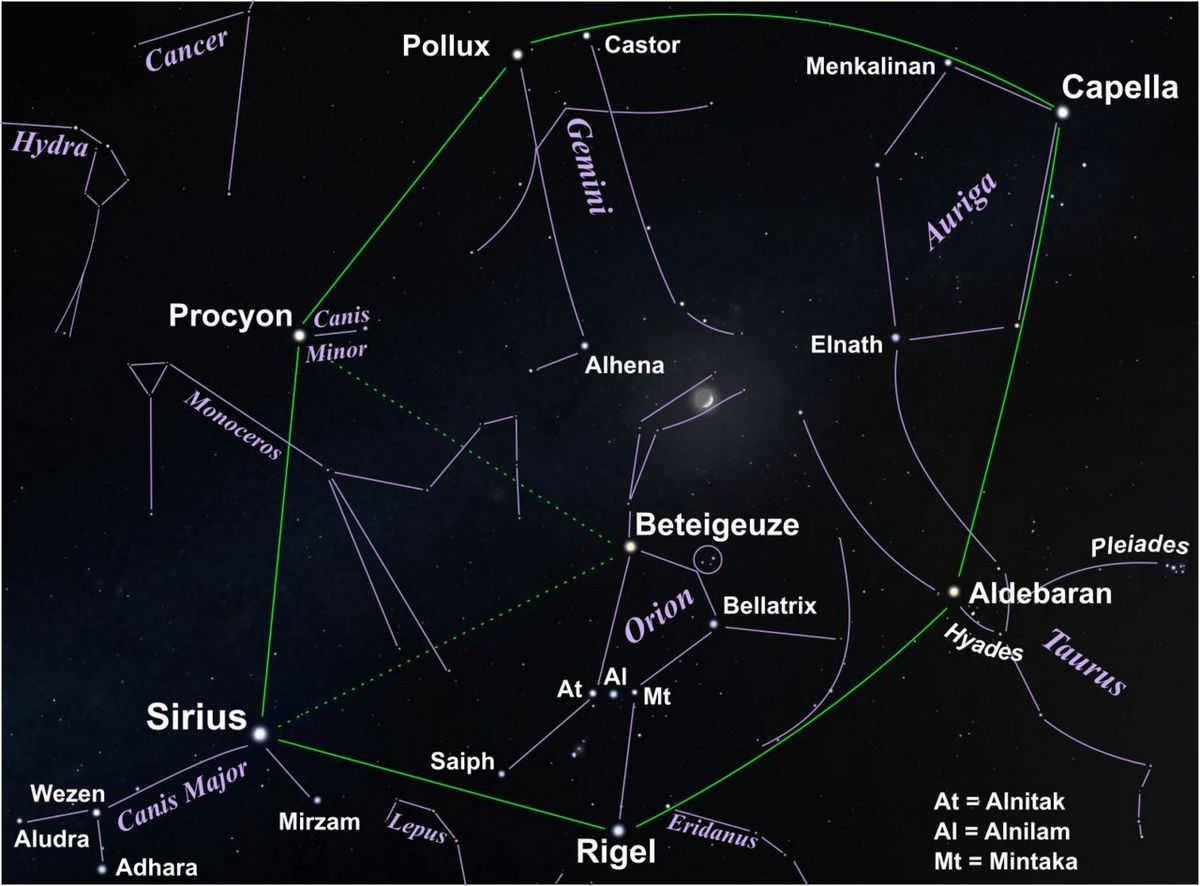
The Winter Circle is not a constellation, but rather a collection of bright stars that form a pattern in the sky during the winter season. This celestial arrangement is most easily visible in the month of February. Sometimes referred to as the Winter Hexagon, this group of stars can be depicted by connecting them in the shape of a hexagon.
At the center of the Winter Circle is the star Betelgeuse, which is part of the constellation Orion. To draw the Winter Circle, one can start by placing the brightest star Sirius in the constellation Canis Major, then continue upwards through the star Procyon in Canis Minor, and further up to the star Pollux in the constellation Gemini. From there, the line turns to another star in Gemini, Castor, and descends through the star Aldebaran in Taurus, eventually reaching the star Rigel in Orion, and finally connecting back to Sirius.
Summarizing
The constellations that are visible in February will soon shift to the western part of the sky and will only be visible in the evenings. By next winter, they will no longer be visible at all.
During winter evenings and nights, the sky offers a mesmerizing view. It is a time when you can observe 7 out of the 21 brightest stars of zero and first magnitude, along with other celestial bodies that are slightly less luminous. The winter constellations not only contain shining stars, but also other astronomically interesting objects.
During the winter season, from sunset to sunrise, the night sky is adorned with various constellations that astronomers refer to as winter constellations. At this time of year, there are no prominent celestial objects at the zenith of the winter sky. However, the Little Bear and Polaris can be found near the north pole. In the northeast, one can spot the Big Dipper, appearing upside down, with the Lion nearby.
To the west of Polaris lies Cassiopeia, and just below it, hovering low above the horizon, are the constellations Lyra and Swan, which are only visible in clear weather conditions. Positioned slightly to the right and below Cassiopeia is Andromeda, accompanied by Aries. Above Lyra, two moderately bright objects, symbolizing the mouth of the stellar Dragon, can be observed. The body of the dragon is formed by numerous faint stars situated between the Little and Big Dipper.
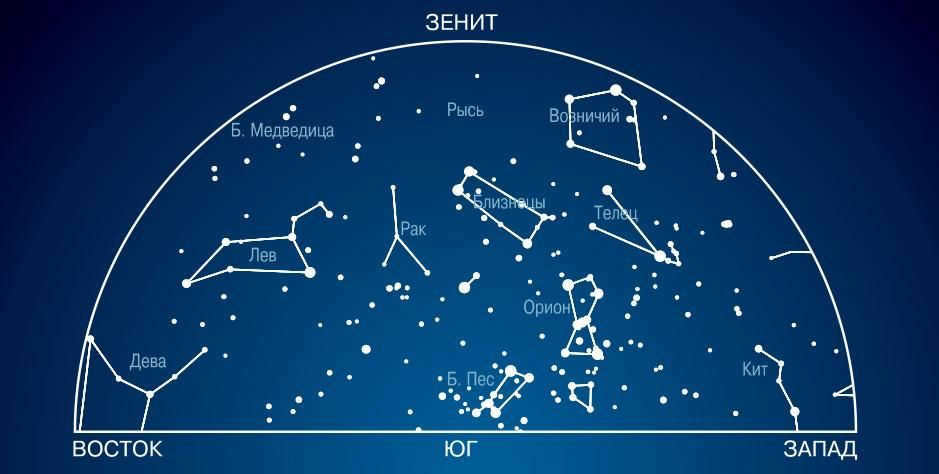
The constellation Cepheus is located above the Swan and consists of a beveled 4-corner of faintly luminous stars. Orion, a stunning constellation that can be seen all year round but is especially captivating in winter, shines toward the south pole. Just below Orion is the Big Dog, while the Little Dog is positioned slightly below and to the left. Higher to the left, you can marvel at Gemini. On the right side of Orion, you will find the constellations Taurus and Perseus, and rising above all these celestial objects is the Ascendant. The most breathtaking part of the sky during winter can be determined by exploring these stars.
The Great Canine and The Small Canine
The constellation known as The Great Canine can be observed in the southern and central regions of Russia. Despite its small size and fragmented appearance, one can use their vivid imagination to discern the shape of a dog within it. Within this constellation lies Sirius, one of the most brilliant celestial bodies in the night sky. To locate this blue supergiant, one can focus on the Orion’s Belt asterism, which appears to point towards this star.
Additionally, there are other celestial bodies within The Great Canine constellation that possess magnitudes of 1 and 2 stars:
Among the other cosmic entities present in this constellation, astronomers have singled out the NGC2161 galaxy. This star cluster is particularly notable due to its young age, as it formed a mere 1 million years ago.
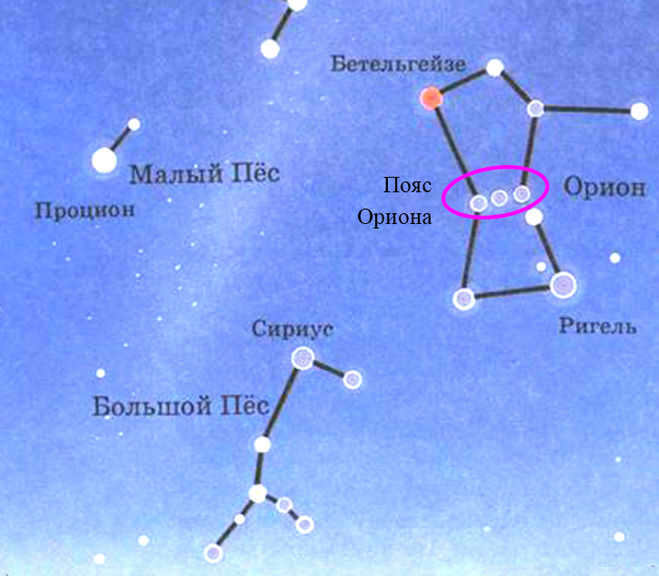
The Little Canis Major is a compact constellation, positioned opposite Orion in relation to the Milky Way. It is captivating to witness two particular stars: Procyon (α), the 8th most radiant celestial body in the heavens boasting an apparent magnitude of 0.38m, and Gomeysa (2.89m), the β star of the Minor Canis.
Ascendant
This group of stars located in the northern hemisphere has been observed since ancient times. It consists of approximately 150 stars that can be seen with the naked eye, and the best time to observe them is from early December to mid-January. To locate the Ascendant, look for a distinct pentagon shape with a tail by visually extending the line between α and β of the Little Bear (Polaris and Cohab) towards the east.
Despite its prominent appearance, this area of the sky does not contain large, bright stars. Instead, it is made up of objects with 4th and 5th apparent magnitudes.
α Ascendant, also known as Capella, is a double star that shares a similar color with the Sun but has a luminosity 150 times greater. It is part of a constellation called “The Goat with the Goats,” which also includes three other small stars.
In ancient times, the ε of the Ascendant was also part of it. Almaaz (derived from the Arabic word “goat”) is a binary star of the eclipsing variable type, with its brightness fluctuating within a range of one magnitude. The eclipse happens approximately every 27 years and lasts for about 2 years. Almaaz is composed of two entities belonging to the spectral classes F and B. The latter emits an insufficient amount of light considering its size, suggesting the presence of a dust disk.
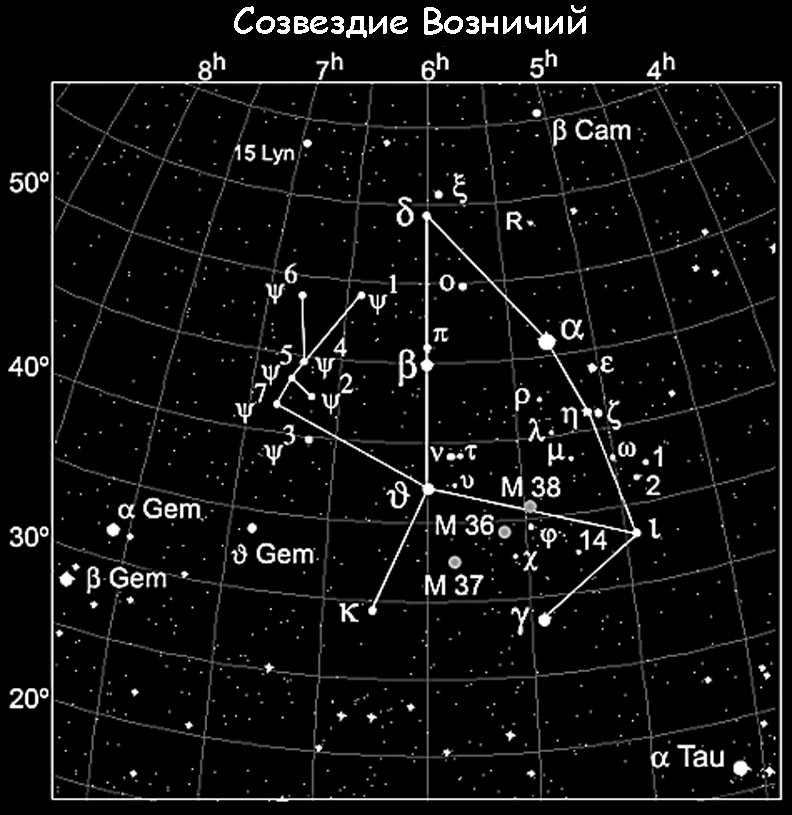
Gemini
The constellation is situated in close proximity to the Milky Way, positioned between Cancer and Taurus. Castor and Pollux represent the α and β stars of Gemini, symbolizing their heads. Their feet are directed towards Orion. Pollux is an ordinary single luminary with an orange hue.
Castor comprises a complex star system consisting of 6 components, including:
- 2 blue giants, each accompanied by a red dwarf;
- a faint distant object YY, which is a binary star spectrally and orbits Castor with intervals spanning several thousand years.
Gemini is associated with the zodiac constellations. Numerous notable individuals were born under this sign, such as Tsar Peter the Great, painter P. Gauguin, jeweler K. Faberge, composer R. Schumann, and other well-known personalities.
Taurus
Approximately ten stars from the list of the brightest can be found in a different zodiacal constellation, which is situated to the northwest of Orion and is adjacent to Aries and Gemini. The most prominent among these stars is Aldebaran, also known as α of Taurus, which is located in the head region of a mythical creature and was considered to be its eye in ancient times. The central object of the system is a normal giant star belonging to class K5 III (red-orange color), which is currently undergoing active helium burning and, as a result, is gradually expanding in size. Orbiting around it is a red dwarf star classified as M2.
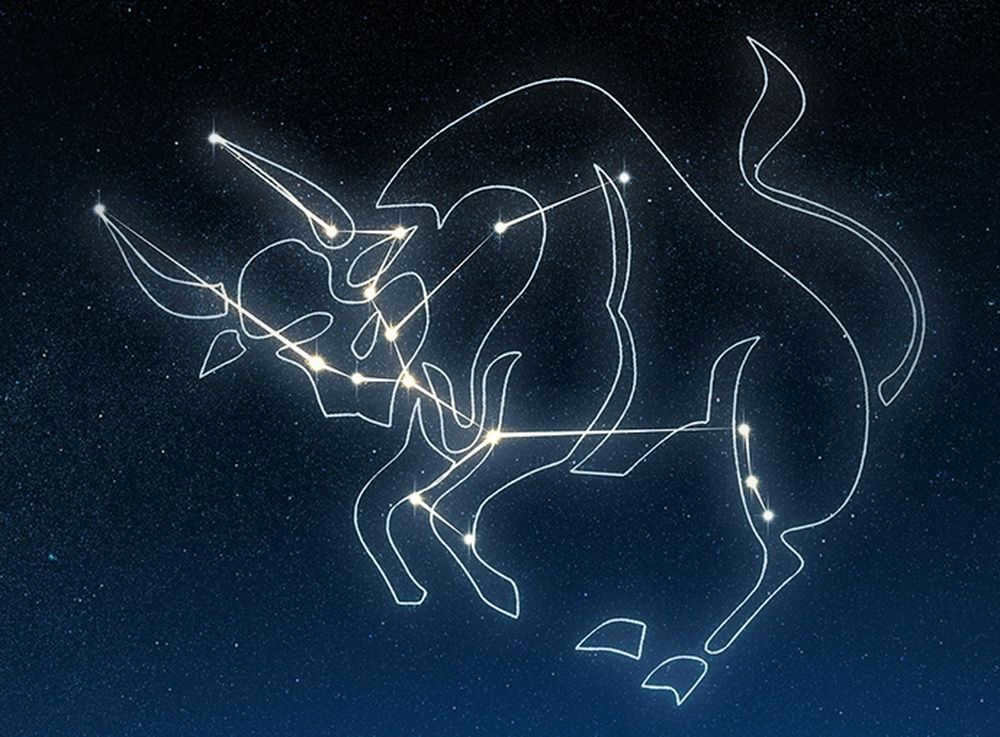
The Nat, also known as β Taurus, was named after the Arabic word “El-Nat” which means “bull’s horns”. It is located near the border of the Ascendant, which is why it was noted in ancient atlases as a star belonging to both constellations. In this part of the sky, there are also other interesting objects to observe such as scattered star clusters. The Hyades surround Aldebaran, although the luminary itself is not part of them. The Pleiades, on the other hand, are made up of physically connected stars, most of which are young hot blue-colored giants.
Unicorn
The Unicorn is a faint constellation, which resembles an inverted letter M, positioned within the triangle created by the stars Betelgeuse, Procyon, and Sirius. This constellation is known for its association with various celestial phenomena, including the Monocerotids meteor stream, the Red Rectangle and Rosette planetary nebulae, and the intriguing object A0620-00. Scientists believe that the A0620-00 star system harbors the nearest black hole to our planet.
Eridanus
Eridanus is a constellation that is named after the mythological underground river. It is visually depicted as a long and winding line that starts just to the west of Rigel in the Orion constellation. From there, it extends towards the Keith constellation and then turns southwards towards Rezz. At the end of this line lies Archnar (α Eridanus), which is a rapidly rotating star with a magnitude of 1. It is interesting to note that Archnar is one of the least spherical celestial bodies, as its polar and equatorial radii differ by a factor of more than 1.5.
The constellation located in the mid-latitudes of the northern hemisphere and adjacent to the celestial equator is widely known and easily recognizable. Its shape resembles the silhouette of a man. To locate it, one can look for the Orion’s Belt asterism, which consists of three blue-white stars: Mintaka, Alnilam, and Alnitaka. By following the Belt’s line in the eastern direction, one can find the blue star Sirius, while in the western direction, the red star Aldebaran can be found.
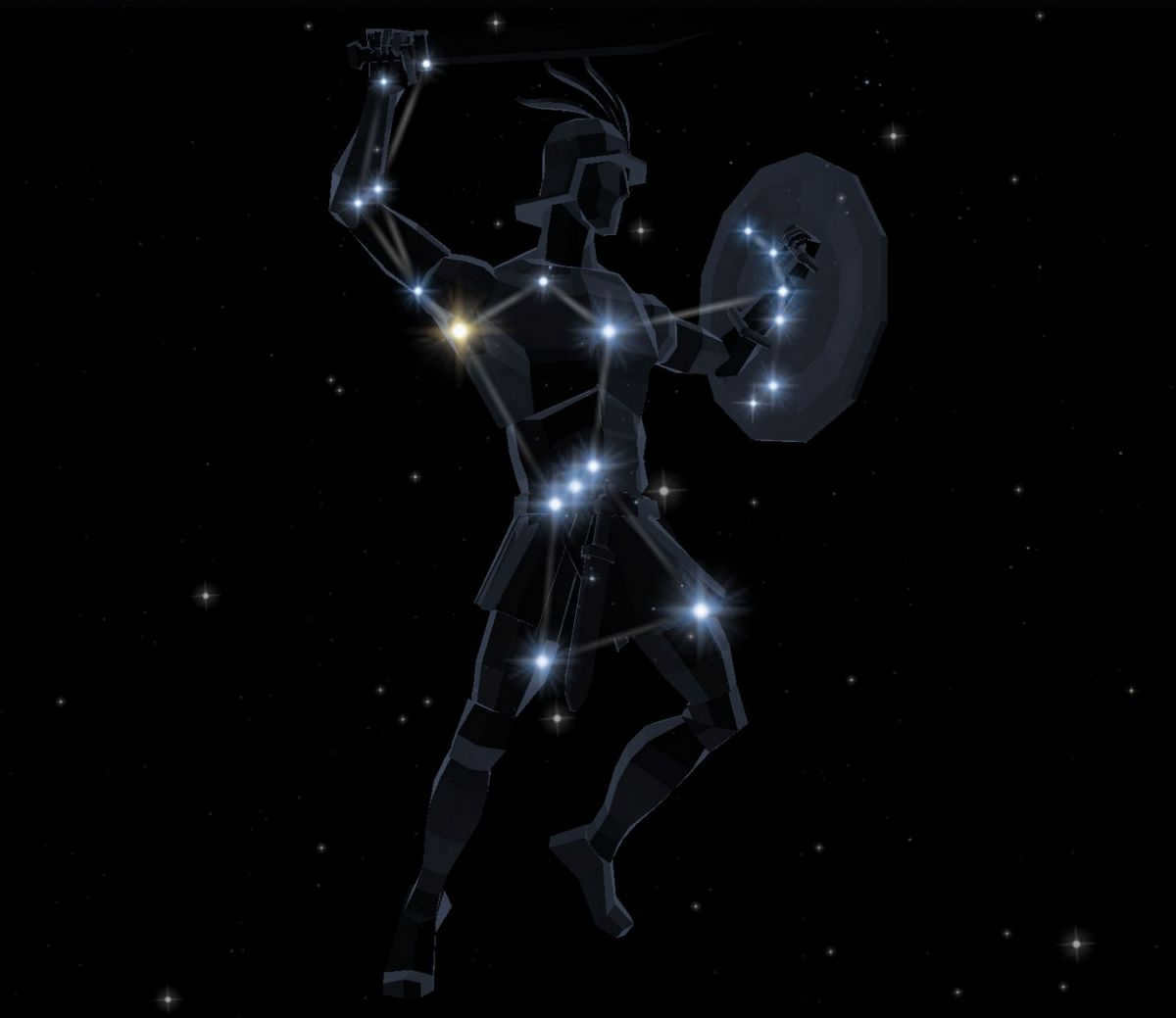
Here are some fascinating celestial objects within the Orion constellation:
- Betelgeuse (α) is an enormous pulsating red supergiant star. It is one of the largest stars known to astronomers, with its size ranging from roughly the diameter of Mars’ orbit at its smallest expansion to the diameter of Jupiter at its largest.
- Rigel (β) is a scorching hot supergiant star with an absolute magnitude of -7. Despite being located 770 light years away from Earth, it is the closest highly luminous object to the Sun.
- B33 is a dark nebula in the shape of a horse’s head, appropriately named the Horsehead Nebula.
- M42 is a nebula that can be observed using binoculars. It can be found just below the Belt asterism and is known for its greenish color.
The M42 nebula is a component of the Orion Cloud, which covers the entire eastern region of the constellation. This area is where young, bright blue giants are formed from interstellar gas, undergo fusion, and eventually break apart again.
Within the vicinity of the prominent Canis Major and Argo Navis constellations, there are four prominent stars that form a unique pattern resembling a simplified depiction of a bird. This distinctive arrangement is characteristic of the small constellation known as Dove. The primary star in Dove, designated as α, is Fad (Fact), a moderately bright star composed of two separate components. Additionally, the constellation features β, which is Wesn, the oldest orange celestial body in the night sky, estimated to be approximately 2 billion years old. Within Dove, there is also an intriguing spiral junction galaxy, characterized by a disk-shaped core that emits significant quantities of hydrogen.
Hare
The Hare is an astronomical object located in the Southern Hemisphere, but it can also be seen from central and southern Russia between the months of January and March. To locate the Hare, you can draw an imaginary line from Rigel towards the Dove constellation, and the Hare lies approximately in the middle. The Hare constellation is formed by four bright stars that create a trapezoid shape. One of these stars, Arneb (α), is currently undergoing a transformation into a red giant, which means it is approaching the end of its life cycle and will eventually fade away.
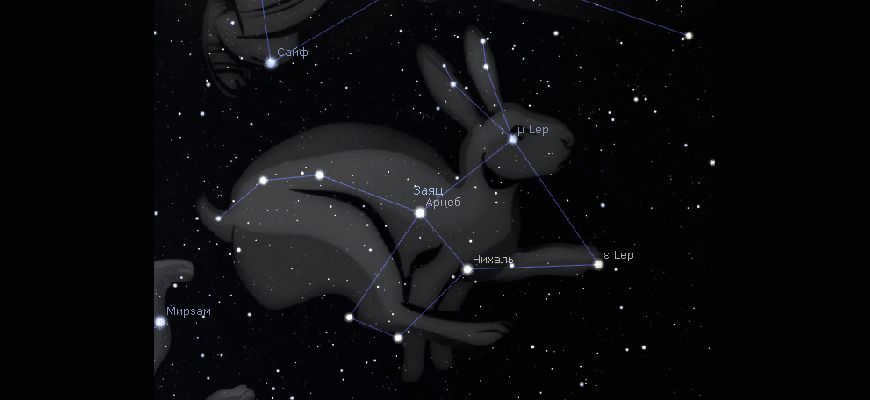
Nihal (β) is a unique multiple star system consisting of 5 components, with the primary star being a yellow giant.
In addition, astronomers have observed the following:
- ζ is a star surrounded by a warm dust cloud and an asteroid belt;
- R Hare, also known as Hynd’s crimson star;
- T Lep is an object that shows variations in luminosity throughout the year within the 5m range;
- M79 is a globular star cluster that acts as a satellite of the Milky Way.
Characteristics of winter constellations
The majority of winter constellations are abundant in brilliant stars and can be easily spotted even without the aid of a telescope. However, there are a few dim constellations, such as Eridanus, the Cutter, and the Painter, that are located in the near-horizon region in the south.
What can be observed during the months of December and January
During the months of December and January, the magnificent constellations Orion and Taurus ascend to the highest point in the sky, making it convenient to observe nebulas and pleiades within them. Aries is a zodiacal constellation that features a figure of an animal with twisted horns, although it may be difficult to discern. The stars Hamal, Sheratan, and Mezarthim shine the brightest in Aries.
Observing in February
February offers a stellar display in the eastern skies, with the emergence of the first spring luminaries of Virgo and Volopassus. Additionally, early risers can catch a glimpse of Venus and Mars in the predawn hours, while Saturn shines brightly in the southeast and Uranus can be spotted in the southwest. Another highlight of February is the observation of Gemini and the Big Dog constellations. However, there are also lesser-known objects worth exploring, such as the Giraffe constellation. Despite its size, the Giraffe constellation is relatively dim, with even its brightest star, α, having a luminosity of only 4m. Nevertheless, this region of the sky is home to two galaxies and one planetary nebula, which make it an intriguing area to observe.
In the second half of February, we begin to notice a significant increase in daylight hours. The Sun, which starts the month in the Capricorn constellation, moves to Aquarius throughout the month. Aquarius is situated directly below the celestial equator. Following Aquarius, the Sun will then move to Pisces, marking the arrival of spring and the vernal equinox!
Now, let’s talk about what you can observe in the February night sky.
Well, the appearance of the sky varies depending on the time we observe it. In February, the nights are still lengthy, and the sky undergoes more than half a rotation during the darkest hours of the day. Consequently, the constellations visible in the evening sky differ significantly from those seen in the morning sky.
Therefore, let’s examine the starry sky in February sequentially. We’ll commence with the evening sky and conclude with the predawn sky.
February Evening Sky
When the sun sets and dusk settles in, if you cast your gaze towards the western horizon in February, you will be greeted by a captivating sight. Two brilliant stars shine brightly just above the horizon, demanding your attention. The star that appears lower and brighter is none other than Vega, known as the main star of the summer sky. Positioned slightly higher is the second star, Deneb.
For those residing in Moscow and St. Petersburg, these stars remain visible above the horizon throughout the year, unlike their counterparts in Sochi and other cities in southern Russia.
To the left of Vega and Deneb, you will find the constellations of Pisces, Pegasus, Andromeda, and Keith gracefully descending towards the horizon. Among them, a prominent star pattern takes shape – a large quadrangle formed by second magnitude stars, with a chain of stars branching upwards from its upper left corner.

The starry sky on an evening in February is a breathtaking sight. If you look towards the western part of the sky, you will notice the magnificent Great Square of Pegasus and the constellation Andromeda. This quadrilateral is aptly named the Great Square of Pegasus because three of its four stars are part of the constellation Pegasus. However, on February evenings, this figure may appear as a tilted rhombus when it is closer to the horizon. The fourth star, located just to the upper left, actually belongs to the constellation Andromeda. In fact, the entire chain of stars that extends upwards from this star also belongs to the Andromeda constellation.
Below the constellations of Pegasus and Andromeda, lies a vast expanse of sky that may not be easily visible in urban areas. This area is occupied by the zodiacal constellation of Pisces, which is made up of dim stars ranging from magnitudes 4 to 6.
To the south of the Pisces constellation lies the constellation of The Whale, which was named after the mythical sea creature that Andromeda was sacrificed to. The Whale constellation is just as expansive as Pisces, but unfortunately, it is not visible in urban areas due to light pollution.
Now, let’s turn our attention to the south. In the evenings of February, the imaginary boundary between the fall and winter constellations can be found in the southern sky. The constellations Aries, Triangle, and Perseus are traditionally associated with the fall season, while Taurus and Eridanus are considered winter constellations.
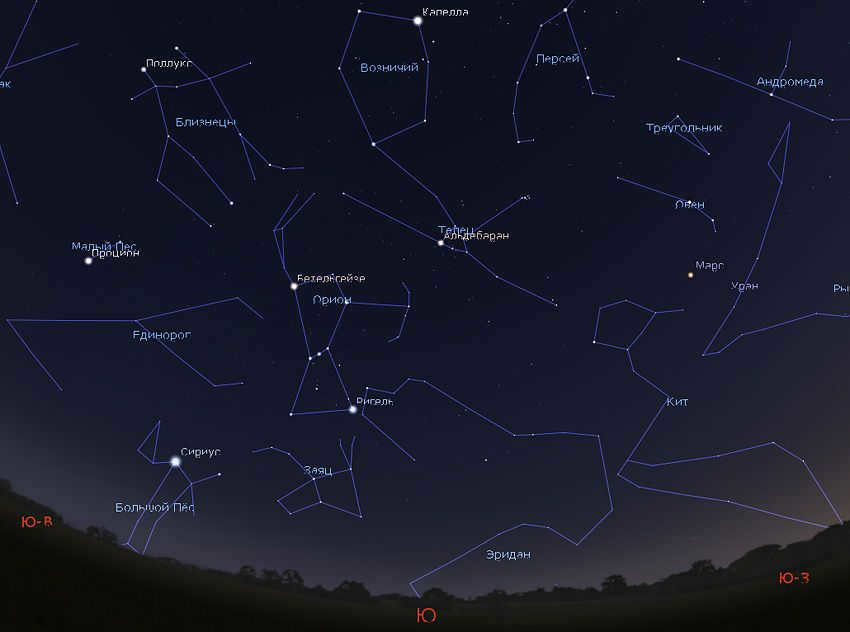
On a winter evening in February, you can see a beautiful starry sky. If you look towards the southern part of the sky, you will be able to spot the winter constellations, with Orion being the most prominent. This information has been provided by Stellarium.
Take a moment to observe the constellation Taurus, which can be easily recognized by the presence of a bright orange star called Aldebaran. To the right of Aldebaran, you will notice a small group of stars that form a dipper shape. In the city sky, this group of stars may appear as a hazy cloud. These stars are known as the Pleiades, which is one of the closest star clusters to us.
The constellations of winter can be seen in the southeast. Compared to the constellations of autumn, these winter constellations are much more vibrant and prominent. One standout constellation among them is Orion, which is known for its brightness and beauty. Orion is composed of seven stars, ranging from first to second magnitude, that form a distinctive pattern. The most striking feature of Orion is its symmetrical arrangement – three stars in the center align to form the Belt of Orion, while the two brightest stars are equidistant from the central star of the belt. These two stars are Betelgeuse, a red star located at the top left, and Rigel, a bluish star located on the lower right.
In the constellation of Orion, it is not difficult to identify a humanoid figure. Surrounding the renowned hunter are the other winter constellations – Hare, Eridanus, Taurus, Ascendant, Gemini, Little Dog, Unicorn, and finally, Big Dog.
During the evenings of February, the brightest star in the night sky, Sirius, emerges in the southeast. Its location can be determined by the stars of Orion’s Belt.
The brilliant Capella from the Ascendant constellation shines near the zenith, while the twins, Castor and Pollux, can be seen in the eastern sky.
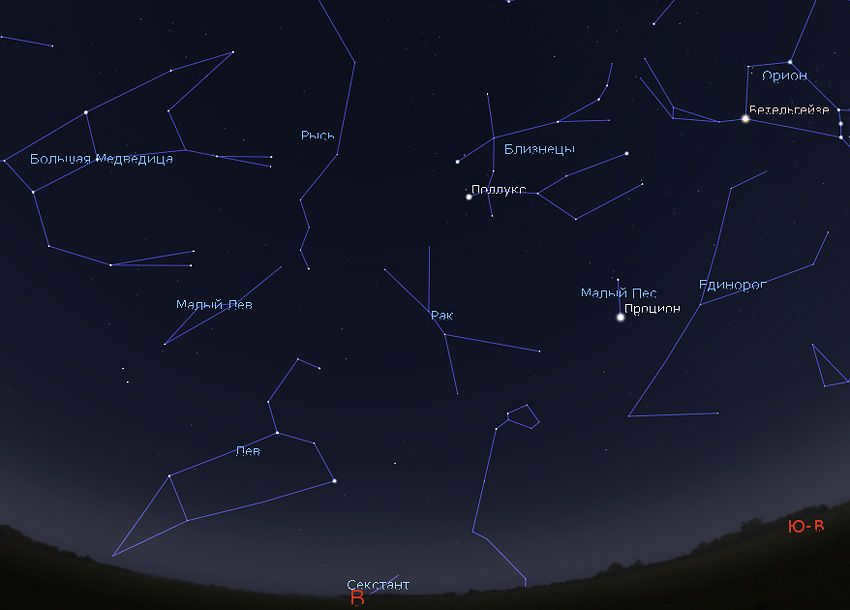
The starry sky can be observed during the month of February. On a clear evening, one can see the eastern part of the sky and the trapezoid shape of the Leo constellation. This information is based on the data provided by Stellarium.
In the northeastern part of the sky, the Big Dipper constellation is prominently visible. The ladle, which is a part of the Big Dipper, is positioned in a unique manner. It appears to be tilted upwards, with the handle serving as a support.
What will the night sky look like in February at midnight?
The entire pattern of constellations will shift towards the west. due to the Earth’s rotation on its axis. Most of the constellations that were visible in the autumn will now be below the horizon. They will be replaced by the winter constellations, which will also start to move closer to the horizon after passing the southern meridian.
The bright star Sirius stands out in the southwest. Positioned low above the horizon, this star frequently twinkles and displays various colors.

During the month of February, one can witness the mesmerizing starry sky at night. The view is particularly captivating when looking towards the southwest. This breathtaking spectacle is beautifully captured in the image above, courtesy of Stellarium.
When the clock strikes midnight, the southern and southeastern parts of the sky come alive with the presence of spring constellations.
However, it is worth noting that these spring constellations may appear quite faint and lackluster. In urban areas, only a few individual stars and some empty spaces can be observed instead of the complete constellations. These include the constellations of Cancer, Cup, Sextant, and partially Hydra.
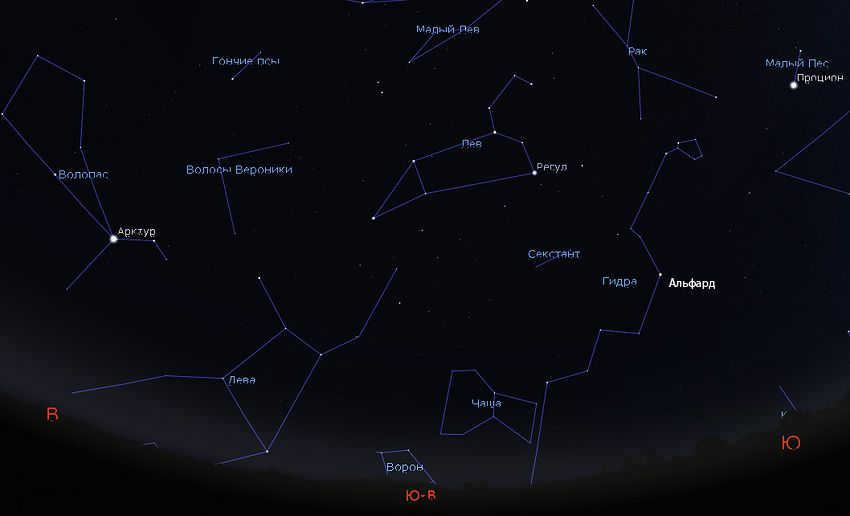
During the month of February, one can observe a magnificent starry sky at night. When looking towards the south, the constellation Leo becomes the prominent star pattern in this area. What distinguishes Leo is its regular geometric shape, making it easily recognizable. The four brightest stars of Leo are arranged in a trapezoid formation, while several other fainter stars form a sort of head above the trapezoid. Leo serves as a main reference point in the spring starry sky, guiding stargazers in their celestial observations.
Also take note of the primary star found within the constellation Hydra, known as Alfard. This star, with a magnitude of two, can be found below and to the right of Leo’s trapezoid. The Arabic translation of Alfard is “lonely,” a fitting name considering the star’s isolated surroundings in the city sky. However, in the village and its vicinity, a peculiar chain of faint stars from the constellation Hydra becomes noticeable near and around Alfard.
If you direct your gaze towards the east at midnight, a brilliant orange-colored star located just above the horizon will capture your attention. This star is known as Arcturus, the ruler of the spring sky.
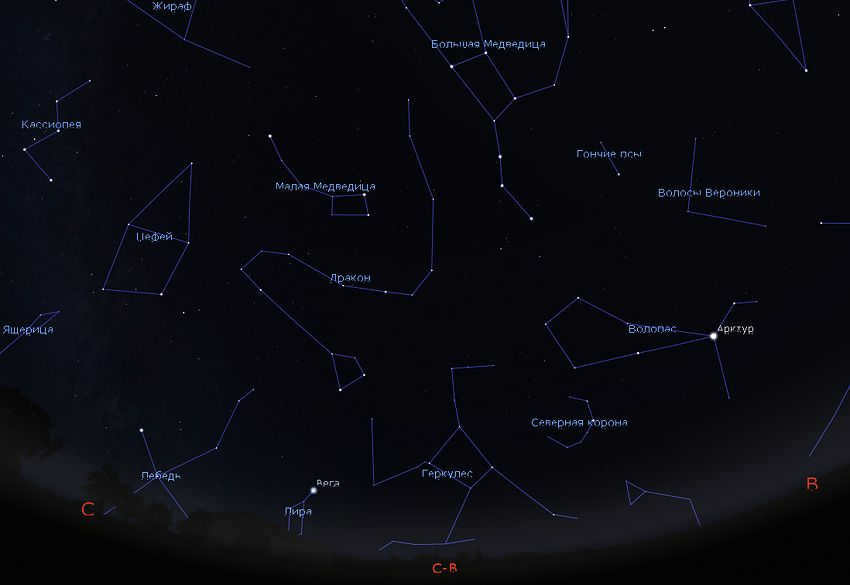
The starry night sky in February is a breathtaking view. The northeastern direction offers a stunning sight. Image source: Stellarium
During the winter season, all constellations to the left of Arcturus are typically associated with the summer sky. One constellation that stands out is the Northern Crown, known for its small yet incredibly beautiful appearance. However, in urban areas, the city lights often diminish its splendor, leaving only a few stars visible from the corona.
To the northwest, Vega and Deneb can be seen low on the horizon. However, these stars may not be visible in the southern regions of Russia.
February morning sky.
Let’s take a moment to admire the pre-dawn sky in February. It’s a stark contrast from the evening sky, with a whole new set of constellations and stars shining brightly.
Gone are the winter constellations that graced the night sky. Only one remains as a reminder – the brilliant star Capella, hovering low on the horizon in the northern part of the sky during February mornings.
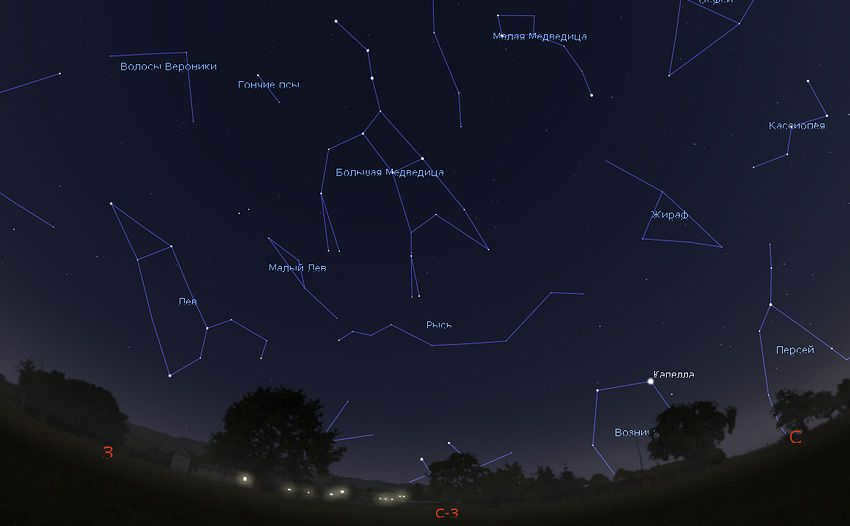
On a February morning, the starry sky is visible in the west. The trapezoid of Leo can be seen sloping towards the horizon, with the Big Dipper’s handle above it. Two bright stars, Arcturus and Spica, lead the constellations Virgo and Volopassus in the southwest. Moving towards the south, the sky is filled with the spring and summer constellations of Libra, Snake, the Northern Crown, and Serpentine.
Note: The constellation of Scorpius, accompanied by the prominent star Antares, can be seen low in the southern horizon. In the central region of Russia, this constellation is only partially visible, with its entirety observable only in the southern parts of the country.
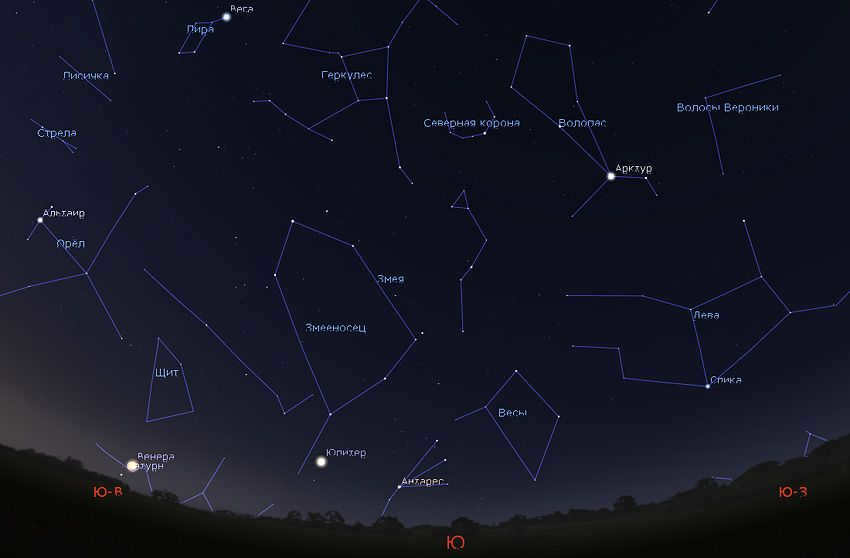

In the morning of February, the sky is filled with stars, offering a majestic view to the south. The Stellarium software helps to depict the stunning spectacle.
As the winter transitions into spring, the main constellations of summer begin to rise in the southeast. Among them, three bright stars form a prominent triangle – Vega, Deneb, and Altair. These celestial beauties are the first to capture our attention. In half a year’s time, this heavenly formation, known as the Summer Triangle, will grace the evening sky in the southern direction.
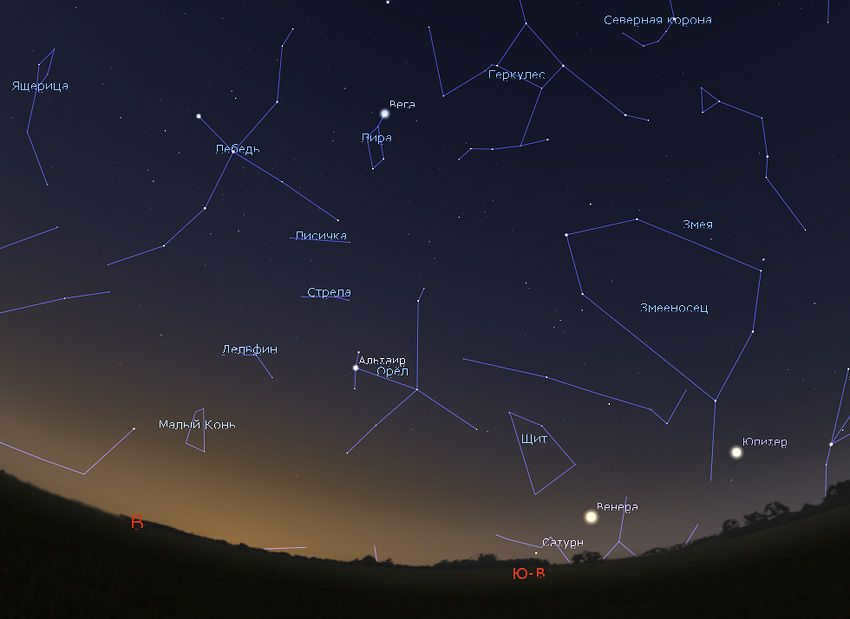
In the morning of February, the starry skies are a breathtaking sight. The Summer Triangle can be seen rising in the southeast, adding to the beauty of the celestial panorama. This mesmerizing display is captured perfectly in the image by Stellarium.
As we shift our gaze to the northeast, we notice the square of Pegasus emerging on the left side of the dawn. This same square can later be observed in the western sky during the evening hours, creating a sense of continuity and connection between the celestial events.
Among all the celestial bodies, Polaris stands out as a constant presence above the northern horizon. It acts as an axis around which all the other constellations revolve, adding an element of stability and order to the ever-changing celestial dance. The distance between Polaris and a constellation determines the size of the circle it traces during the day, with more distant constellations creating larger circles. Some constellations, like Scorpius, are so far from Polaris that they barely peek above the horizon in our northern sky, making them a rare and special sight.
The cycle of constellations has come full circle. We have examined all the major constellations that can be seen in the night sky in February. As the coming months pass, the nights will gradually grow shorter and fewer constellations will be visible.
It is worth noting that the patterns we have described will repeat every February, whether it be in a year, two years, ten years, or even a hundred years from now. The only changes that will occur in the night sky are related to the movements of the Moon and the planets.
During the month of February in 2019, the focus of stargazers’ attention was on two of the most prominent celestial bodies – Venus, which is the brightest luminary in the sky after the Sun and Moon, and the planet Jupiter, which also shines brightly. Additionally, in the evening sky, the reddish planet Mars was easily noticeable. It’s worth noting that in the coming years, the arrangement of the planets will change, potentially causing some confusion in the night sky. However, this will only be the case if one is not familiar with the stars and their positions.
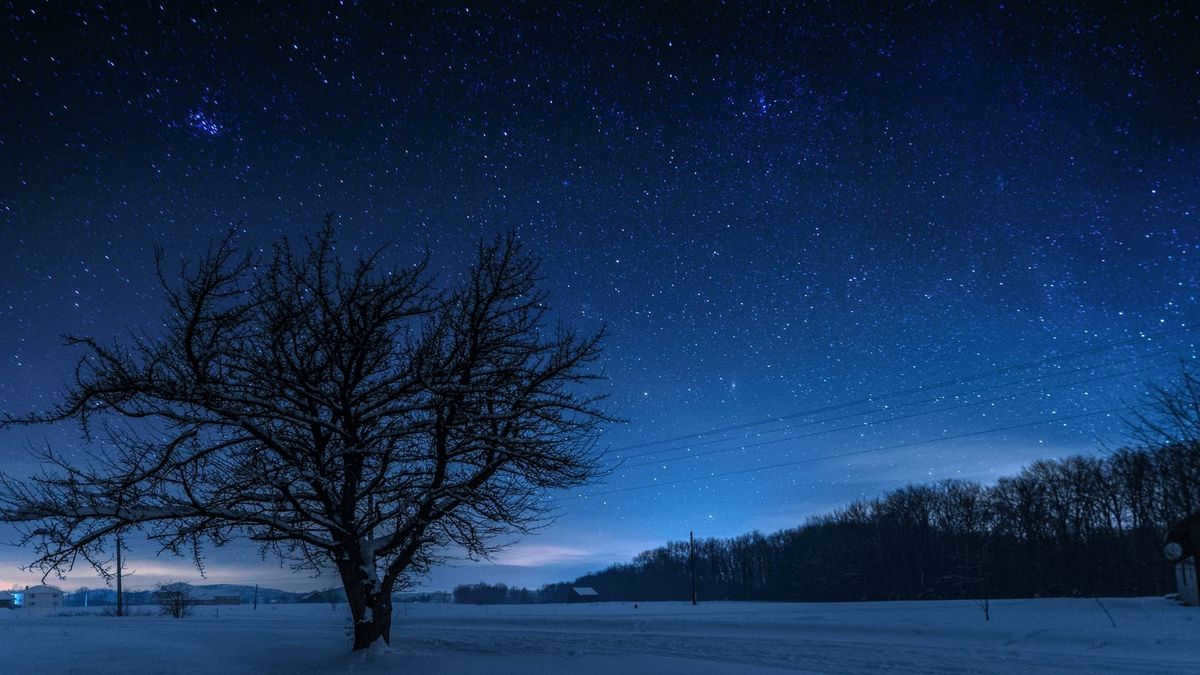
In January of 2023, sky enthusiasts all over the globe will have the opportunity to witness a brilliant comet, some intriguing conjunctions between the Moon and planets, a plentiful meteor shower, and captivating constellations.
These are the types of celestial events that you definitely don’t want to miss:
- The Quadrantid meteor shower will reach its peak on the night of January 4-5. Despite the nearly full Moon, this annual meteor shower is known for its strong meteor activity and is sure to delight observers.
- The Moon will pass close to Venus and Saturn on the same night, creating a fascinating celestial alignment.
- Mercury will reach its greatest westerly elongation on January 30. This will be the optimal time to observe the planet for the next three months.
- Stay tuned for more events this year with our Astronomical Calendar 2023. Don’t have time to read a lengthy article? No worries! We’ve got you covered with a convenient infographic highlighting the top 10 major events in the night sky for 2023.
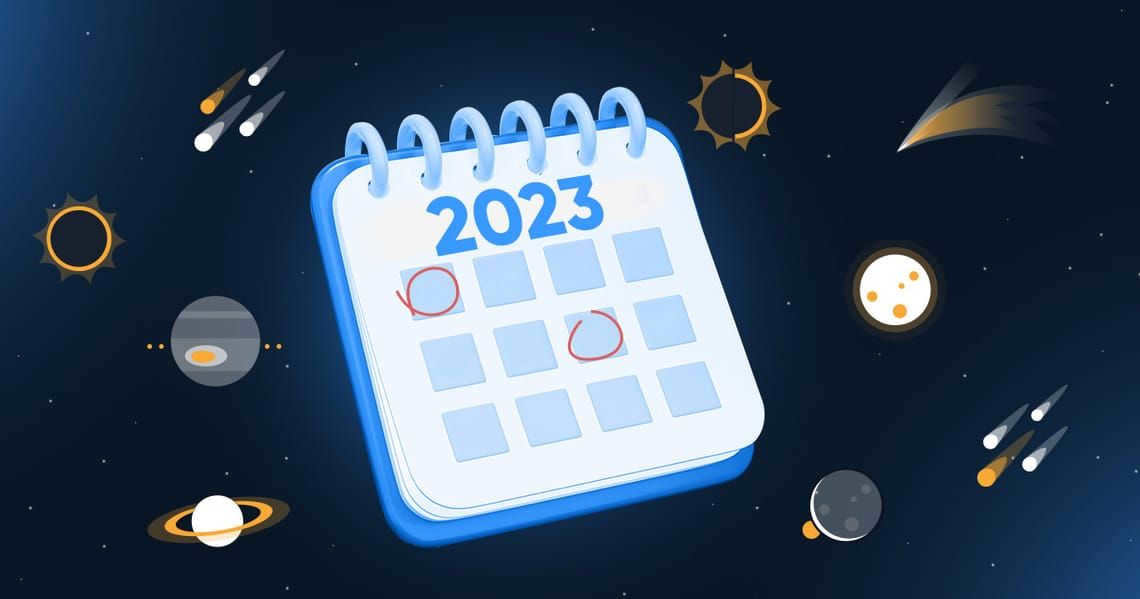
Wondering what celestial events are worth catching a glimpse of in 2023? Look no further than our handy calendar, which details the most awe-inspiring astronomical phenomena of the year!
January 3: Conjunction of the Moon and Mars
On January 3 at 22:51 MSC (19:51 GMT), Mars (with a sidereal magnitude of -1.1) will align with the 89% illuminated Moon in the Taurus constellation. The two objects will appear extremely close, with a visible distance of 0°32′. While a telescope will provide the best view of this event, it can still be comfortably observed with binoculars or even the naked eye.
Observers from Africa and the Maldives will have the opportunity to witness the Moon passing in front of Mars. This celestial phenomenon, known as an occultation, can only be observed from specific regions, while others will only see a conjunction.
January 4: peak of the Quadrantid meteor shower 🌟
The Quadrantid meteor shower will be active from December 12 to January 12, reaching its climax around January 4. The radiant point of this meteor shower will be situated in the Volopassus constellation. In ideal conditions, it would be possible to see up to 110 meteors per hour. However, this year the meteor shower coincides with a full moon, which will hinder observations due to the moonlight. The best viewing opportunities for this meteor shower will be in the northern hemisphere, particularly after moonset and before dawn.
January 7: Full Moon
The full moon known as the wolf moon is scheduled to appear on January 7 at 02:08 MSC (January 6 at 23:08 GMT). This mesmerizing celestial event will take place in the constellation Gemini. From a technical perspective, a full moon is defined as the precise moment when the Moon is on the opposite side of the Earth from the Sun. However, the Moon’s disk will appear completely illuminated throughout the day preceding and following this momentous occasion.
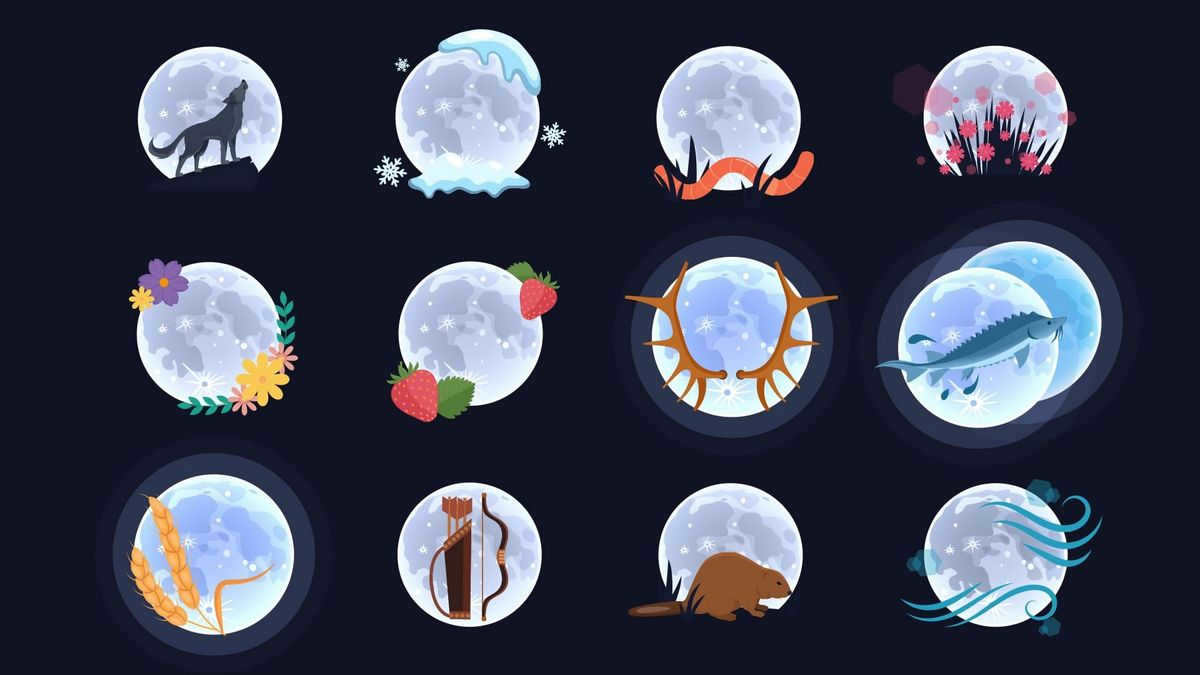
What is the schedule for the upcoming full moons in 2023? When can we expect to witness the mesmerizing phenomenon of a Blue super moon? Our comprehensive calendar provides you with the precise dates, times, and names for each of this year’s full moons.
In January, we will be graced with a full moon occurring just prior to apogee, which is the farthest point in the moon’s orbit from Earth. This particular full moon is known as an Apogee Moon or a micro moon, as it appears slightly smaller and less radiant compared to a typical full moon.
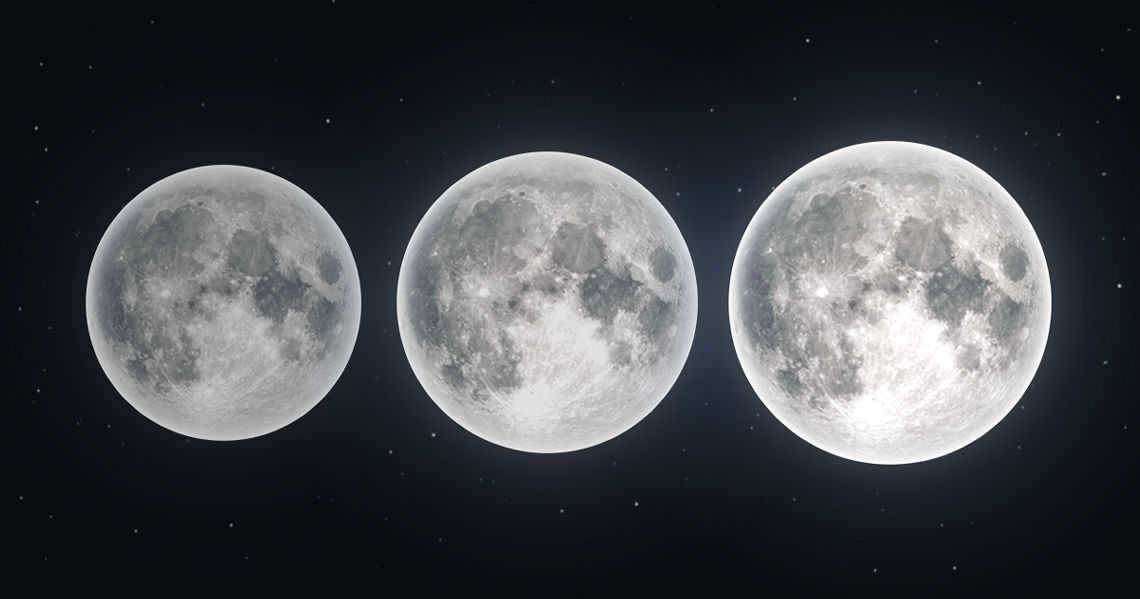
Have you ever wondered about the phenomenon of a super moon and a micro moon? Do you know when our natural satellite appears to be the largest and brightest? Discover all the answers in this captivating infographic!
Mark your calendars for January 12: the perihelion of comet C/2022 E3 (ZTF)
The most promising comet of the year, C/2022 E3 (ZTF), will reach its closest point to the Sun on January 12, 2023. At perihelion, the comet will be approximately 1.11 astronomical units away from the Sun. If you happen to be located in the Northern Hemisphere, you will have the opportunity to observe C/2022 E3 (ZTF) as it moves across the sky from the Northern Crown to the Volopassus constellation. With the aid of binoculars or a small telescope, you can witness the comet shining with a magnitude of around 7. As the days progress, the comet will journey through the Dragon and Little Bear constellations before reaching its maximum brightness on February 1, 2023, in the Giraffe constellation. At this point, the comet will be visible to observers all around the world.
January 21: New Moon
The upcoming new moon is scheduled to take place on January 21st at 23:53 MSC (20:53 GMT). During this time, the moon will be positioned between Earth and the Sun, resulting in its unilluminated side facing Earth. As a result, it will not be visible from our planet. This particular phase of the moon is widely regarded as an optimal opportunity for stargazing, as the absence of moonlight allows for unobstructed observations of celestial objects.
January 23: Venus-Saturn conjunction
At 00:53 MSC on January 23 (21:53 GMT on January 22), there will be a close encounter between Venus (with a sidereal magnitude of -3.9) and Saturn (with a sidereal magnitude of 0.7). This celestial event will take place in the constellation Capricorn. While it is possible to observe this conjunction using a telescope, it can also be seen with binoculars or even with the naked eye. The planets will appear close enough to each other to fit within the field of view of a telescope, providing a fascinating sight for stargazers.
At 10:22 MSC (07:22 GMT) on January 23, Saturn (stellar magnitude 0.7) will encounter the Moon, which will be illuminated by 5%, in the constellation of Capricorn. The distance between the two objects that will be visible is 3°49'. This distance is too large for both objects to fit within the telescope’s field of view, but you can still observe the conjunction with your naked eye or binoculars.
Later in the day, at 11:20 MSC (08:20 GMT), the Moon will come closer to Venus (sidereal magnitude -3.9). The objects will be 3°27' apart and will not fit together in the telescope’s field of view. However, they will be bright enough to observe without any optical aids.
January 26: Conjunction of the Moon and Jupiter
On January 26, at 05:03 MSC (02:03 GMT), the Moon and Jupiter will come together in the constellation Pisces. Jupiter, with a stellar magnitude of -2.2, will be 1°48' away from the Moon, which will be 28% illuminated. Although the distance between the two objects is too large to fit into the field of view of a telescope, you can still witness this celestial event with the naked eye or binoculars.
January 30: Mercury reaches its furthest point to the west 🌟
On January 30, at 12:05 MSC (09:05 GMT), Mercury will be at its maximum distance to the west of the Sun in the sky. The planet will have a brightness of -0.2 in the constellation Sagittarius, positioned 24° away from the Sun. At this moment, Mercury is at its optimal position in the sky. This is because the Sun’s rays do not hinder observations. Search for Mercury towards the dawn direction as soon as the sky darkens enough for stars to become visible.
January 31: Moon-Mars conjunction 🌟
On January 31, at 07:27 MSC (04:27 GMT), the planet Mars (with a brightness of -0.3) will come into close proximity with the Moon, which will be 77% illuminated, in the constellation Taurus. The apparent distance between these celestial bodies will be a mere 0°06'. This will be the closest they will appear in the sky throughout the entire year. The Moon and Mars will be in close enough proximity to be observed using a telescope, but the conjunction will also be noticeable with binoculars or even to the naked eye.
In certain regions of the Americas, observers will be fortunate enough to witness the Moon passing directly in front of Mars. This phenomenon is referred to as an occultation, and it can only be observed from specific locations; the rest of us will only be able to see the conjunction.
Deep space phenomena in the month of January
During the months of January and February, the renowned Pleiades (with a sidereal magnitude of 1.6) will be prominently visible in the night sky. To catch a glimpse of this celestial spectacle, keep an eye out around 8 p.m. according to your local time, within the Taurus constellation. This star cluster can be observed with the naked eye, especially in areas with minimal light pollution.
January’s Constellations
Orion, a constellation known for its brightness, is easily recognizable. It includes the vibrant Betelgeuse and the bright bluish-white star Rigel (both among the top ten brightest stars in the night sky). Additionally, Orion’s Belt, consisting of three stars, is a well-known asterism.
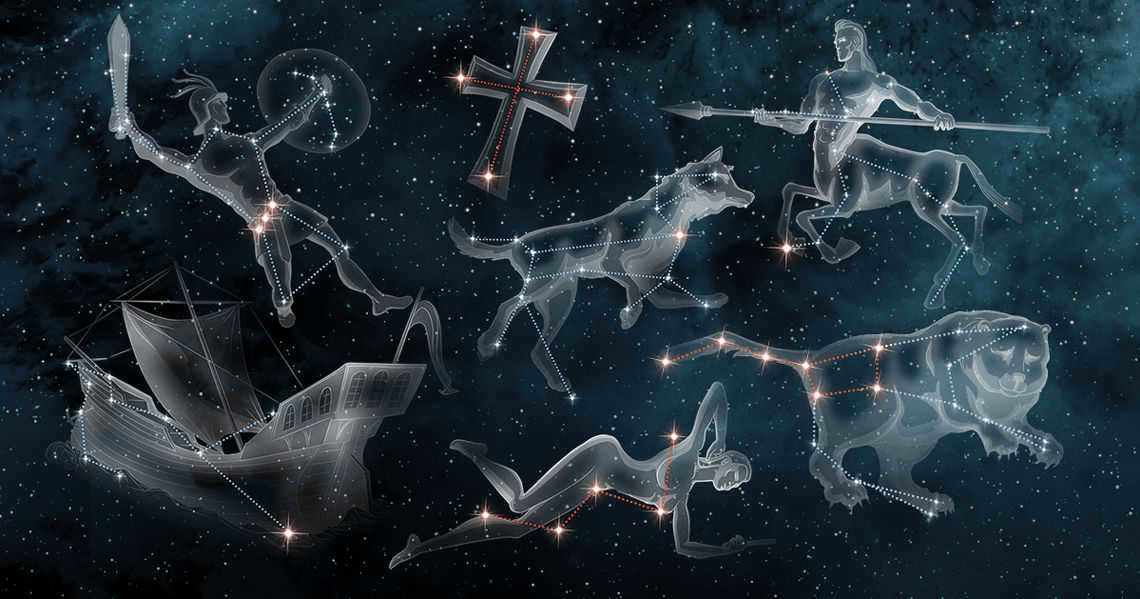
This informative graphic will demonstrate the process of locating the most well-known constellations and asterisms in the night sky, and you will also have the opportunity to discover fascinating details about each specific constellation.
One of the most renowned constellations in the northern latitudes is Taurus, which encompasses both the Pleiades cluster and the vibrant red star known as Aldebaran. By following Orion’s Belt Asterism, you will be directed towards the brightest star within this particular constellation.

Discover how to locate the most brilliant stars: Sirius, Arcturus, Polaris, and many others. Familiarize yourself with the nocturnal heavens using this visual representation!
Winter presents prime opportunities for observers in the Northern Hemisphere to catch a glimpse of the southern constellation known as Canis Major, or the Big Dog. It ascends from the horizon, southeast to southwest, following Orion. This constellation boasts the night sky’s brightest star, Sirius, making it relatively easy to locate.
Chilly winter nights may not be ideal for stargazing, so consider practicing your skills from the comfort of your own home. Test your knowledge by taking our quiz and see if you can successfully identify each star solely by its position in the night sky.

Are you familiar with the locations of Polaris and Sirius? Test your knowledge in astronomy by taking this quiz! Identify all the stars correctly and you could win a prize!
What other celestial objects can you observe in the sky today (in the Southern Hemisphere)?
Deep Space Objects in January
- January 2: Little Beehive cluster (magnitude 4.5).
- January 15: M47 (magnitude 4.4)
- January 17: NGC 2451 (magnitude 2.8)
- January 20: NGC 2516 (magnitude 3.8).
- January 23: NGC 2547 (magnitude 4.7).
- January 31: Omicron Sails cluster (magnitude 2.5).
- January 31: IC 2395 (magnitude 4.0).
Moreover, observers in the southern region have the opportunity to witness the Large Magellanic Cloud (with a sidereal magnitude of 0.9) and the Small Magellanic Cloud (with a sidereal magnitude of 2), which are the satellite galaxies of the Milky Way. These celestial bodies are visible throughout the year in the Southern Hemisphere due to their proximity to the southern celestial pole, ensuring that they never descend below the horizon.
January Constellations
The Goldfish constellation, which is not visible to observers north of the equator, encompasses a significant portion of the Large Magellanic Cloud. This small constellation can be best observed during the nights of January, although it is generally faint and challenging to distinguish. Its most prominent star, alpha Goldfish, has a stellar magnitude of only 3.3.
Table Mountain, another one of the smaller constellations in the sky, does not have any stars brighter than a magnitude of 3.0. Similar to the Goldfish constellation, it also includes a section of the Large Magellanic Cloud. You can observe it around 9 pm local time.
The Incisor constellation is most visible in January at approximately 9 PM local time. This constellation is particularly appealing to those who appreciate intricate objects due to its small size (ranking as the 81st largest constellation in the sky) and unobtrusive appearance (lacking stars brighter than 4th magnitude in the Rezec).
How can I locate celestial objects?
You can effortlessly locate celestial objects using Sky Tonight. Open the app and direct your device towards the sky; the app will display an interactive star map based on your current location. Activate augmented reality mode by tapping the large blue button in the bottom right corner of the screen; Sky Tonight superimposes the sky map onto live images of the actual sky captured by your camera.
Summing it up
In January, people from all over the world will have the opportunity to witness a dazzling comet, numerous occasions where the Moon aligns with planets, a spectacular meteor shower, a smaller-than-average full moon, and various other captivating astronomical phenomena. To enhance your celestial experience, make use of Sky Tonight, an application designed to assist you in identifying stars, planets, and other celestial entities.
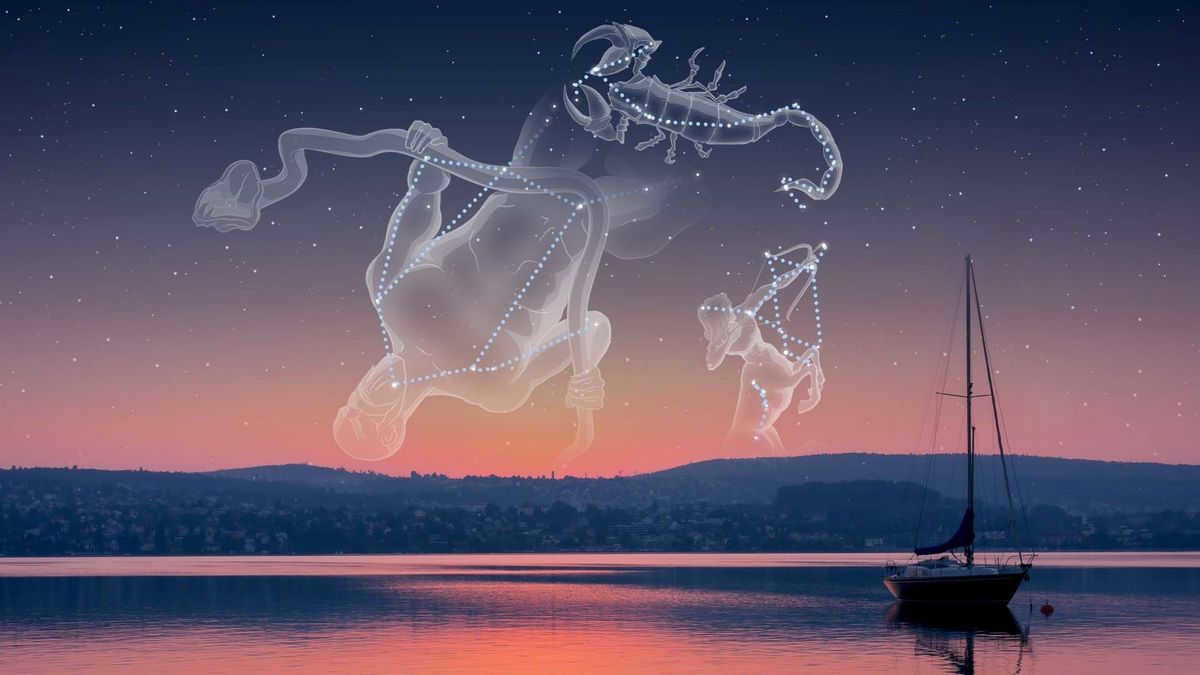
Constellations that are most visible during specific seasons are known as seasonal constellations. In this piece, we will discuss the constellations that are most prominent in the Southern Hemisphere during summer, fall, winter, and spring. We also suggest reading our article on the constellations found in the Northern Hemisphere.
What causes certain constellations to be visible during summer while others can only be seen in winter?
If the Sun didn’t emit its powerful light during the day, we would be able to see stars at all times. The Sun’s brightness is so intense that it overpowers the light of other stars, rendering them invisible during daylight hours. Nevertheless, a few stars are still observable even during the day. Explore our article on daytime astronomy to discover what celestial bodies can be observed in the sky when the Sun is shining.
As the Earth orbits the Sun, the positions of the stars in the sky shift. During specific times of the year, certain constellations are visible in the sky simultaneously with the Sun, making them difficult to observe. The constellations along the ecliptic demonstrate this concept particularly well. For instance, in November, the constellation Scorpius is not visible due to the Sun being within its boundaries. However, on July nights, we can observe Scorpius as the Sun is located in the opposite part of the sky.
To easily locate constellations, a convenient option is to utilize stargazing applications. A great example is the Star Walk 2 app. Simply access the app and select the magnifying glass icon located in the bottom left corner of the main screen. Next, input the name of the desired constellation into the search box and choose the corresponding result. The app will then display the home screen, providing a map of the night sky with the constellation’s location indicated. By pointing your device upwards or tapping the compass icon in the top left corner, you will be able to identify the constellation in the actual sky above you. For a more in-depth explanation, please refer to our instructional video on how to effectively utilize the app.
Sky Tonight is a great tool for discovering constellations. To use the app, simply tap on the magnifying glass icon located at the bottom of the screen. Then, type in the name of the constellation you’re interested in and select the blue target icon next to the corresponding result. This will display the constellation’s position on the interactive sky map. To locate it in the night sky, either press the large blue button in the bottom right corner or point your device upwards and follow the white arrow. Sky Tonight also offers a range of other features to enhance your stargazing experience. Be sure to watch the app’s video to learn about all of its capabilities and make the most of them.
There are certain constellations that can be easily identified due to their distinct characteristics. One such constellation is the Southern Cross, which stands out with its unique cruciform shape. Another notable constellation is Kiel, known for being home to the second brightest star in the night sky. You can find both of these constellations in our comprehensive list of the most recognizable constellations. Additionally, we provide observing tips to enhance your stargazing experience. Moreover, you can also enhance your knowledge by taking our tests on identifying constellations based on their outlines and locating stars based on their positions. By mastering these skills, you will be able to observe the stars with the expertise of an experienced astronomer!

This infographic provides a guide on how to locate the most well-known constellations and asterisms in the night sky, along with fascinating facts about each constellation.
Winter Sky Constellations
In the Southern Hemisphere, the winter season spans from the end of June to the end of September. During this time, two zodiac constellations – Scorpio and Sagittarius – can be observed high in the sky, along with the Serpentine constellation, which is often mistakenly considered the thirteenth zodiac constellation (our article explains the reasons behind this misconception).
Scorpius, the most southern of all the zodiacal constellations, can be easily identified by the distinctive hook-shaped group of stars known as the tail of Scorpio. The brightest star in this constellation is Antares. The name of this star originates from a Greek phrase which means “Mars’ rival”. This name is fitting due to its vibrant ruby red color and its impressive luminosity, comparable to that of a planet. There are four objects from the Messier catalog located within this constellation, one of which is M7, also known as the Ptolemy cluster. This particular cluster is even visible to the naked eye. The other three objects, M4, M80, and M6, also known as the Butterfly cluster, are best observed with the use of binoculars. When observing Scorpius through a telescope, it is possible to view various nebulae, such as the Cat’s Paw Nebula (NGC 6334) and the Butterfly Nebula (NGC 6302).
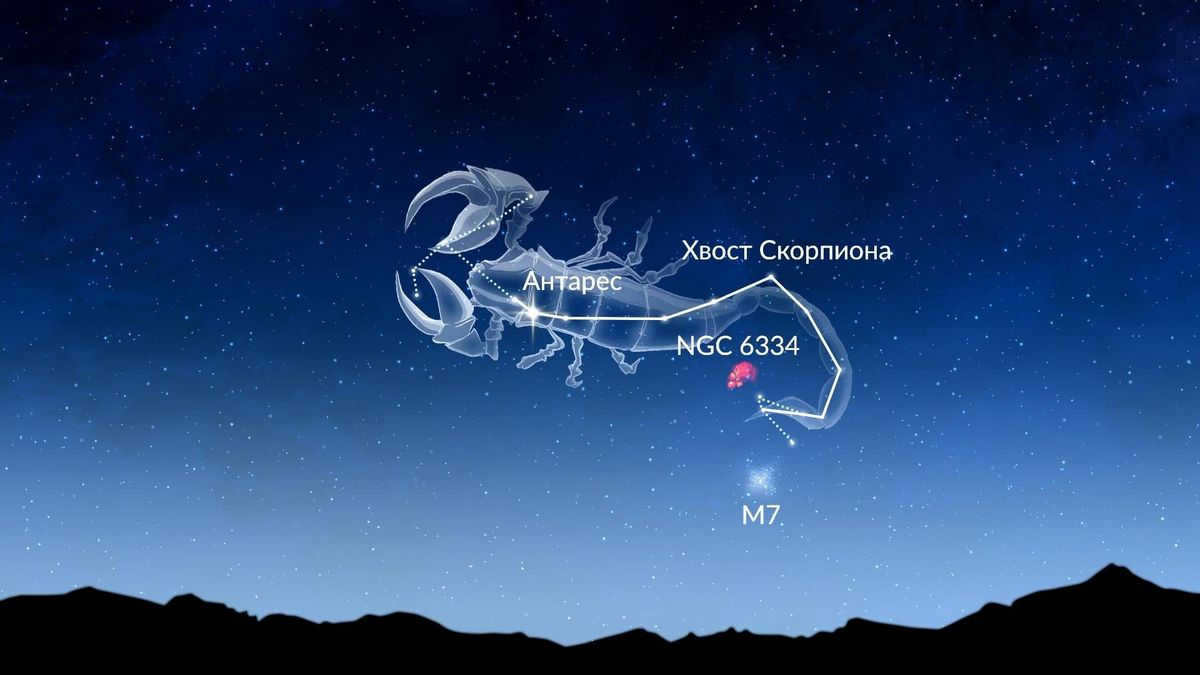
Sagittarius
Sagittarius can easily be identified by its asterism known as the Teapot, which is formed by the eight brightest stars in the constellation. With just a little bit of practice, it can be easily spotted even without the aid of a telescope. Situated at the center of the Milky Way, Sagittarius offers a breathtaking view of the Sagittarius Arm, one of the spiral branches of our galaxy. This arm resembles steam rising from the spout of a teapot, and can be seen in a dark enough sky.
The Sagittarius constellation is abundant with various deep space objects. Individuals with excellent eyesight have the ability to observe some of these objects, such as M22, also known as the Sagittarius cluster, and M24, which is the Sagittarius star cloud, without the need for any optical aids. On the other hand, it is possible to view nebulae like M8, commonly referred to as the Lagoon Nebula, Omega Nebula, also known as M17 or the Laguna Nebula, M20, which is the Triple Nebula, and NGC 6822, otherwise known as the Barnard galaxy, by using binoculars. For those using a telescope, NGC 6537, otherwise called the Red Spider Nebula, will serve as an excellent target.
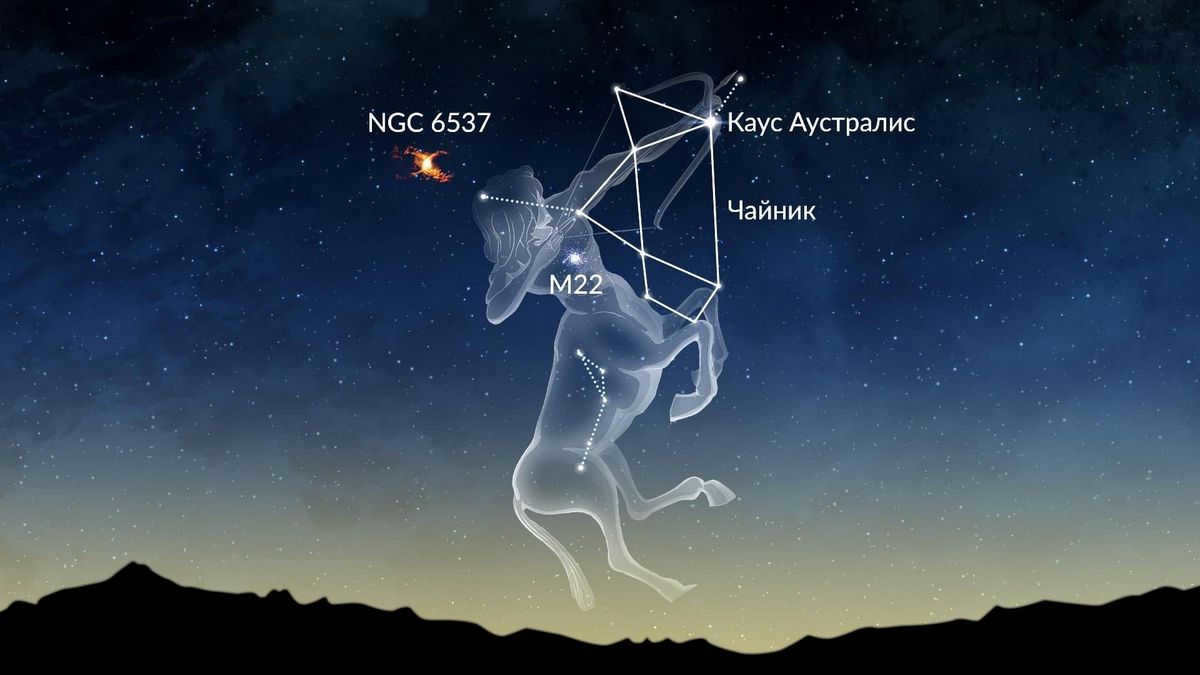
The Serpent
The Serpent is a constellation that is not widely known, despite its large size. It lacks bright stars, but it does have some interesting ones, such as Rasalhague (the brightest star, representing the head of the Serpent) and Barnard’s star – the fourth closest star to Earth (although it can only be seen with a telescope due to its proximity). The Serpent constellation also contains seven Messier objects (M9, M10, M12, M14, M19, M62, and M107), a nebula known as the Minkowski Butterfly Nebula, and the active galaxy NGC 6240.
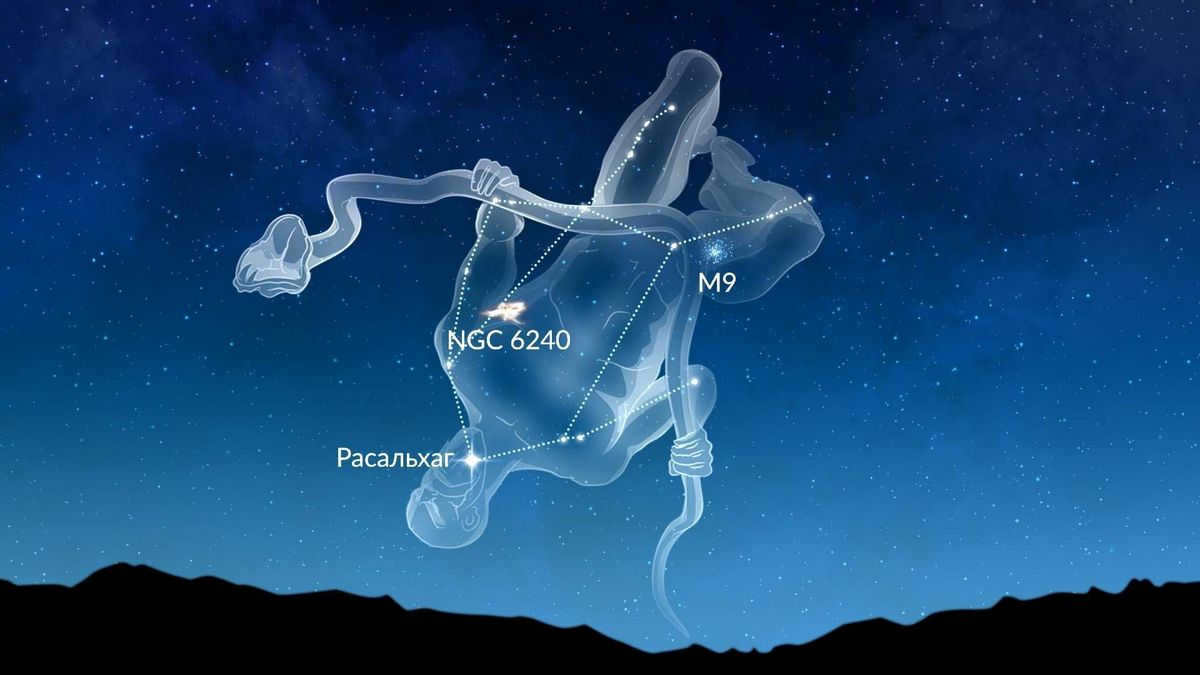
Constellations in the Spring Sky
The period from late September to the end of December marks the arrival of spring in the Southern Hemisphere. During this season, stargazers can catch sight of a vibrant tropical bird, a celestial aquarius, and a colossal creature from the depths of the ocean, all prominently displayed in the southern sky.
Toucan
The Toucan can be seen throughout the year in the Southern Hemisphere, but November offers the best opportunities for sightings. Within this constellation, there is a single star that shines brighter than the rest – α Tucana. However, it is also known for being home to several extraordinary celestial objects. For instance, one can easily spot the Small Magellanic Cloud or NGC 292 with the naked eye. Nearby, between the constellations of Goldfish and Table Mountain, you will find its “big brother,” the Large Magellanic Cloud. Additionally, without the need for any optical aids, one can also observe 47 Tucana (NGC 104), the second brightest globular cluster in the sky. For those with binoculars or a telescope, NGC 265, NGC 290, NGC 346, and NGC 362 are all exceptional objects to study.
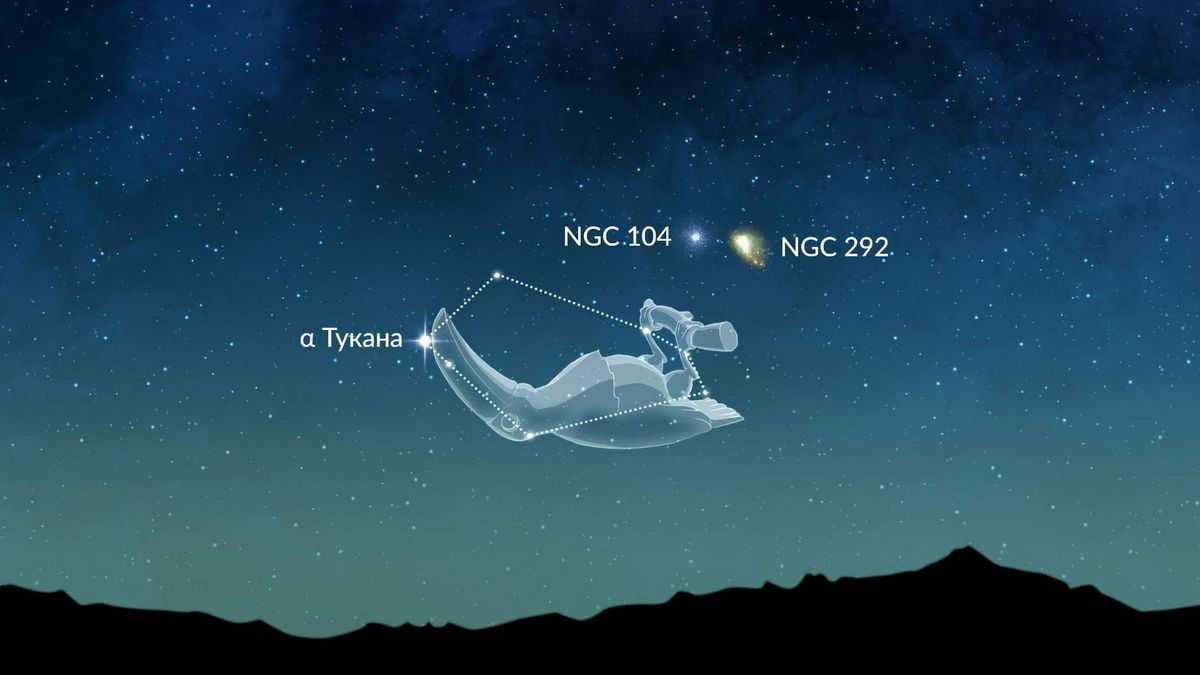
Aquarius
There are only a few prominent stars in the Aquarius constellation. The most notable ones include Sadalmelec and Sadalsuud. In a dark night sky, there is a distinctive Y-shaped pattern known as the Jug. Astronomers using telescopes can also observe three Messier objects, namely star clusters M2, M72, and M73, as well as the Snail Nebula (NGC 7293) and the Saturn Nebula (NGC 7009).
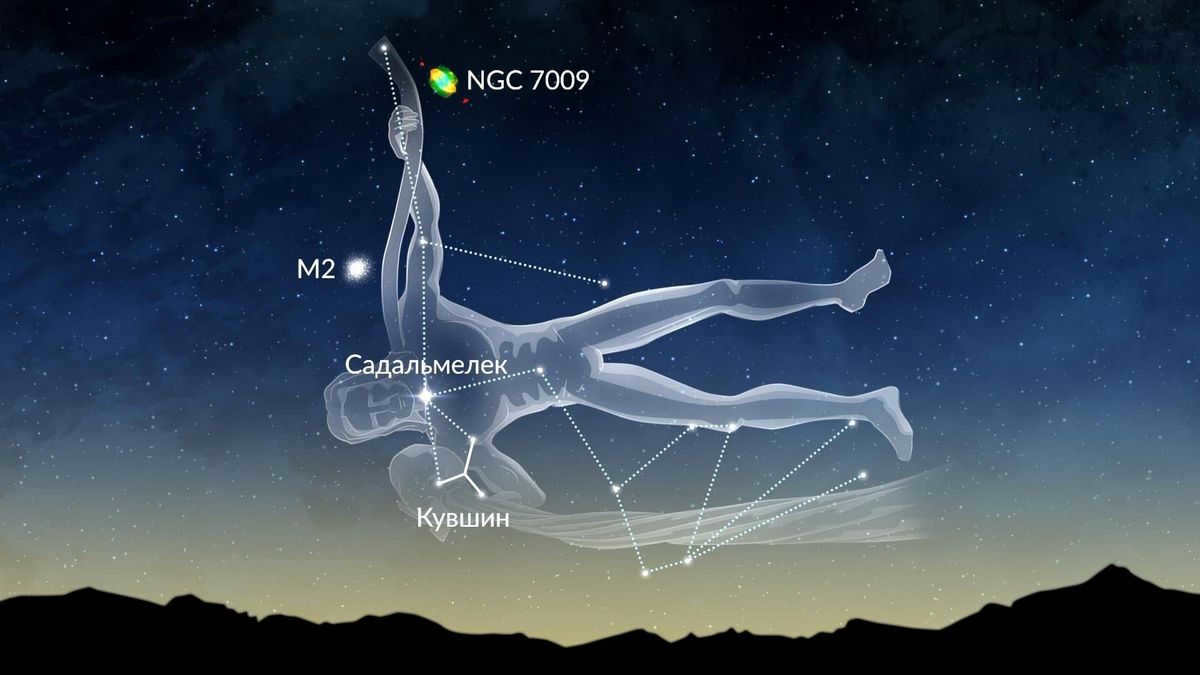
Whale
The Whale constellation is known as the third largest constellation in the Southern sky. It boasts bright stars like Diphda and Menkar. Additionally, there are more than 25 galaxies to be found within the constellation, such as NGC 17, NGC 1073, and NGC 1087. The spiral galaxy M77, which is the only Messier object in the Kita constellation, can also be observed using binoculars.
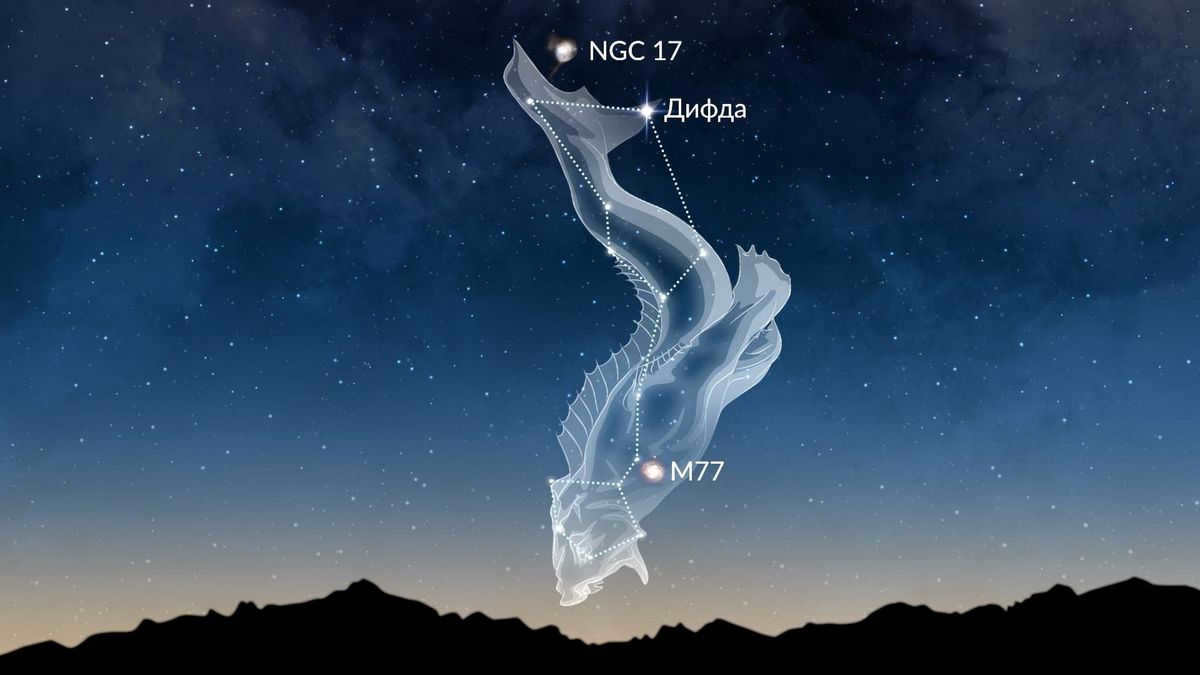

Observing Summer Constellations
From late December to the end of March, the summer season graces the Southern Hemisphere. This period provides an excellent opportunity to witness some of the most expansive constellations visible in the night sky.
Hydra
Hydra, the celestial serpent, is known as the largest constellation in the night sky. While it may not boast a plethora of bright stars, one standout is Alphard, which serves as the heart of this colossal creature. For those with keen eyes, locating Hydra’s head is a rewarding challenge. Positioned between the constellations Leo and Little Dog, a circle of stars marks this elusive feature. With the aid of optical instruments, observers can marvel at the breathtaking sights within Hydra. Jupiter’s Ghost (NGC 3242), a mesmerizing nebula, awaits discovery, along with three notable Messier objects. These include the star clusters M48 and M68, as well as the awe-inspiring Southern Chain Wheel galaxy (M83).
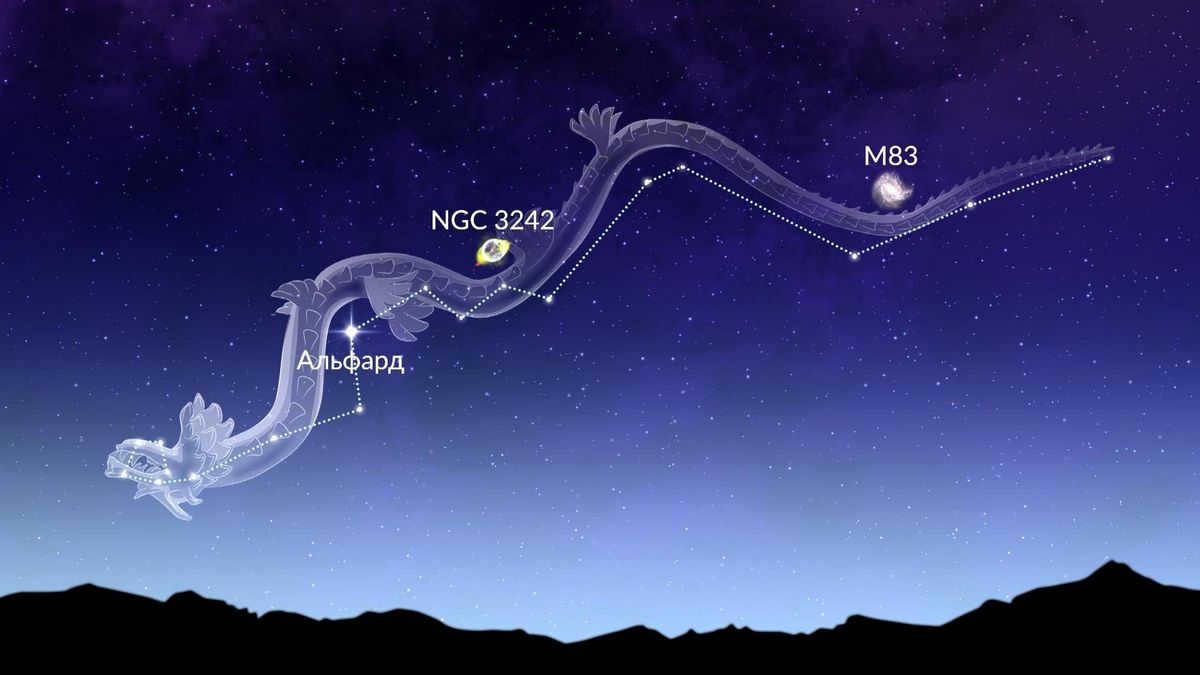
The River Eridanus
Eridanus is connected to numerous actual and mythical rivers in diverse cultures. It is recognized as one of the lengthiest and faintest constellations. Its most brilliant star, Ahernar, can be effortlessly located by using the Southern Cross. The remainder of the constellation is solely observable in the most pitch-black locations, away from populated areas and light pollution. Eridanus encompasses a vast array of galaxies (such as the Eridanus group of galaxies, NGC 1232, NGC 1300, and NGC 1309); to catch a glimpse of these, a telescope is necessary.


Discover how to locate the most brilliant stars: Sirius, Arcturus, Polaris, and numerous others. Acquaint yourself with the nocturnal sky using this informative illustration!
An additional remarkable cosmic entity in Eridanus is the nebula Witch’s Head (IC 2118), which obtained its name due to its resemblance to the profile of a witch’s face. Numerous nebulae appear like various characters or objects. Can you deduce the moniker of a nebula based on its depiction? Verify your knowledge by participating in our quiz!
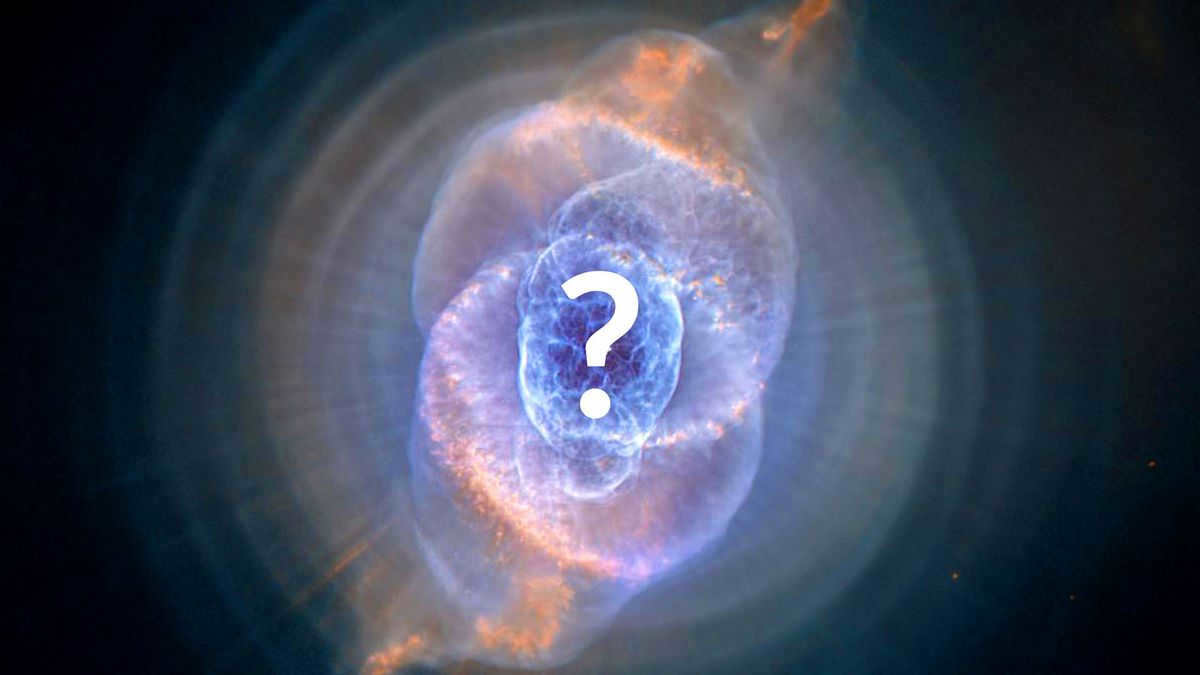

Astronomers have a peculiar habit of assigning unconventional names to celestial objects. Can you identify the names of the nebulas depicted in these photographs?
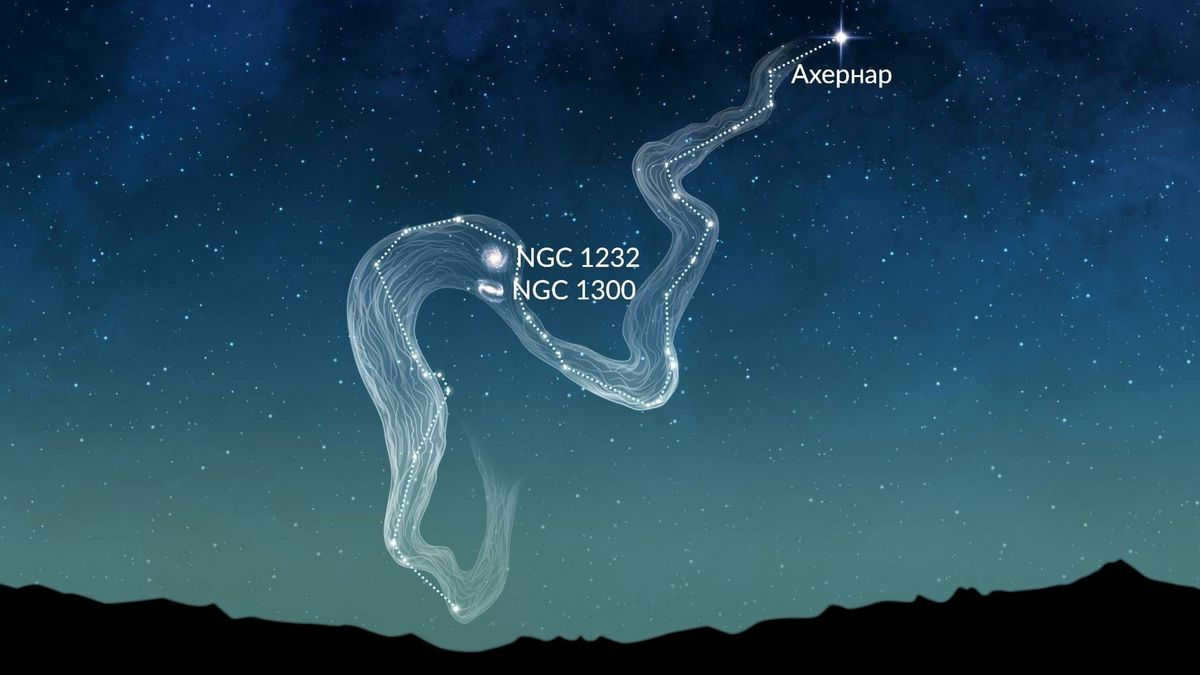
Constellation Korma
Korma used to be a component of a constellation that represented the legendary vessel Argo. It was once among the largest constellations in the night sky, but it was later divided into three smaller constellations: Corma, Kiel, and Sail. The most prominent star in Korma is known as Naos, which translates to “ship” in Greek. Korma contains a variety of fascinating celestial objects, including the star cluster M47, which can even be observed with the naked eye. By utilizing optical instruments, astronomers can also discover two other Messier objects (M46 and M93), as well as the nebula the Rotten Egg and the emission nebula NGC 2467, which is alternatively referred to as Skull and Bones.
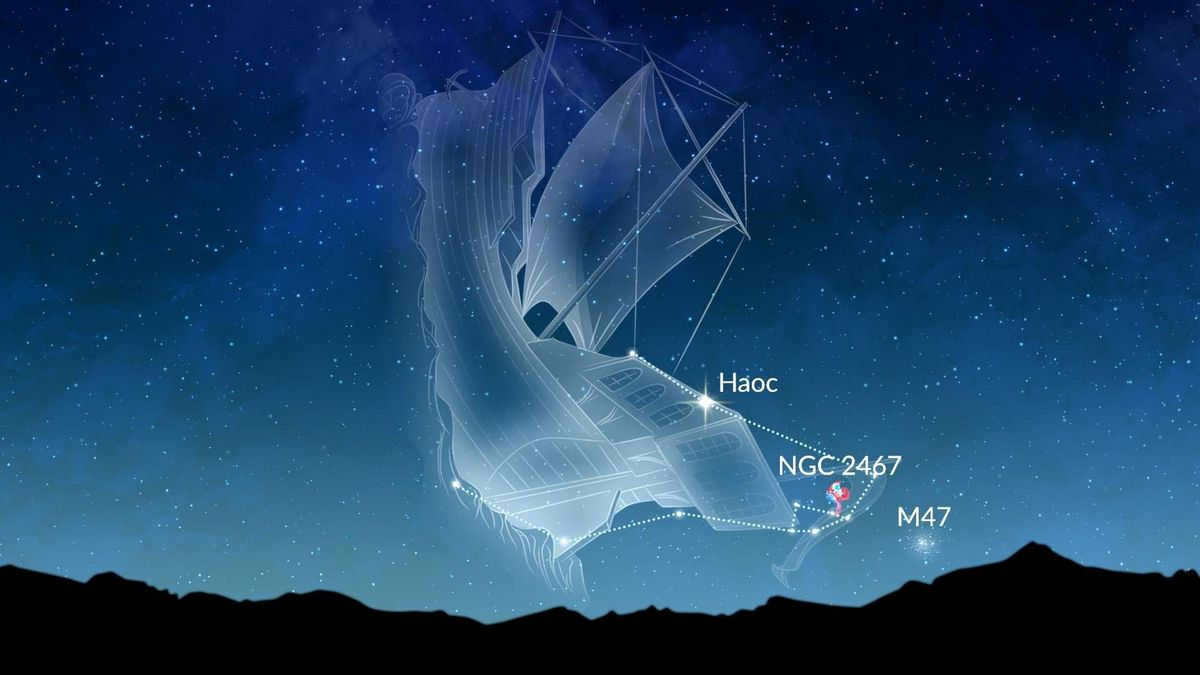
Constellations in the Autumn Sky
Throughout the year, the Southern Cross, Centaurus, and Kiel can be seen from the Southern Hemisphere. However, during the autumn months (late March to late June), they reach their highest position in the night sky and offer the most favorable viewing conditions.
The Southern Cross
The Southern Cross is a well-known constellation that dominates the Southern sky. Despite being the smallest constellation, its four bright stars create a distinct pattern that has been used for navigation purposes. Acrux and Hakrux, the two stars that mark the top and bottom of the cross, align to indicate the direction of the South Pole. Additionally, this constellation is home to “The Jewel Box” (NGC 4755), a remarkable star cluster that can be seen with the naked eye.
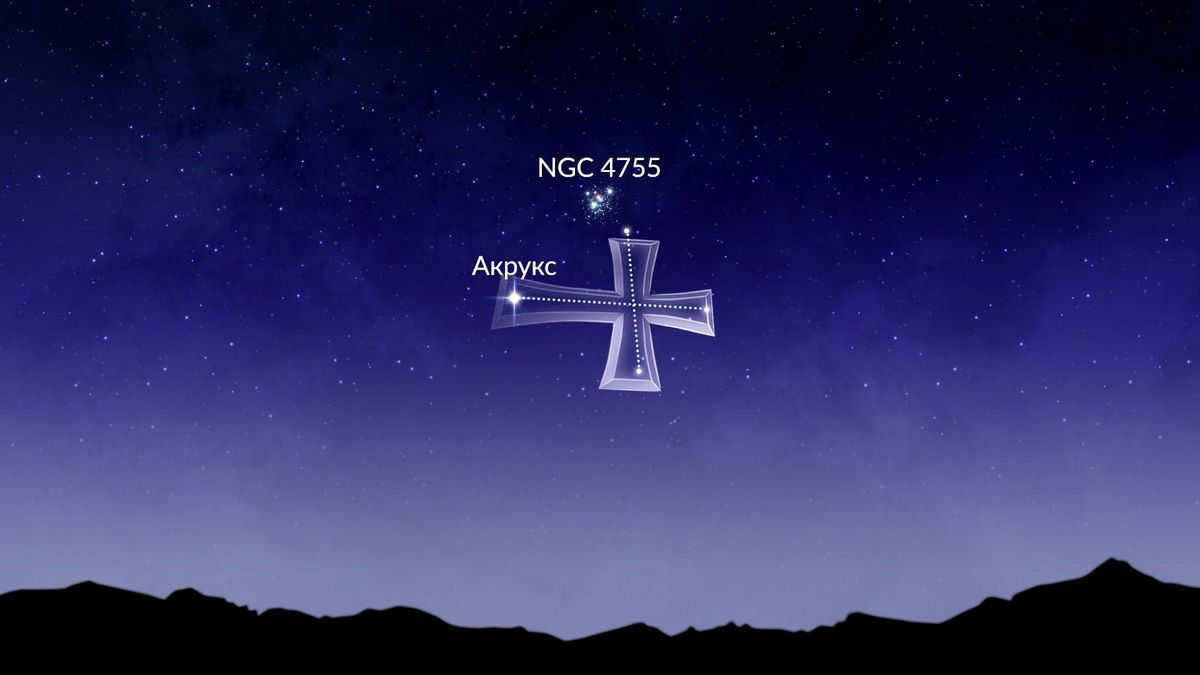
Centaurus
Centaurus is a vast constellation where we can find the prominent Alpha Centauri. This particular star is the most brilliant within the constellation and the third brightest in the whole night sky. It can be easily observed with the naked eye, just like the famous Omega Centauri cluster (NGC 5139), which is the most renowned celestial object in Centaurus. With the help of a telescope, one can also observe the NGC 3918 nebula, as well as such galaxies as Centaurus A, NGC 4603, NGC 4622, and NGC 4945.
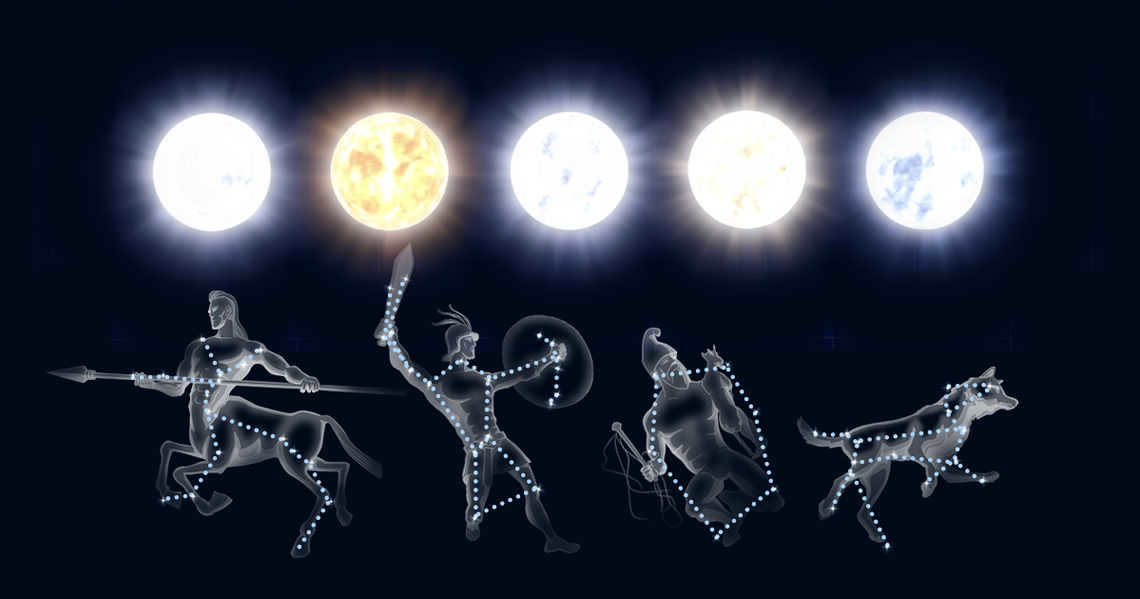
Take a look at this informative image to discover the identities of the most luminous stars and the constellations they belong to, along with their relative proximity to our planet and the optimal moments to observe them!
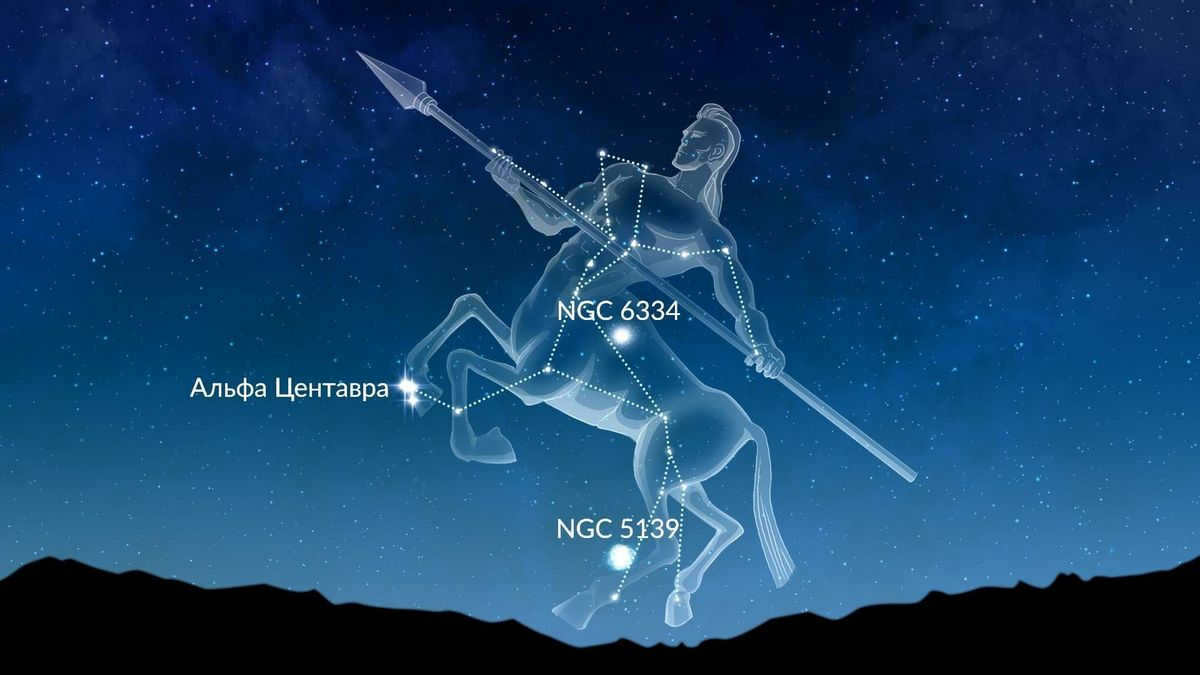
Kiel
Kiel, a part of the former constellation Argo Navis, encompasses the Canopus, which is the second brightest star in the nighttime sky. Two other stars, Avior and Aspidiske (along with Alcefina and Markab from the Sail constellation), create a group of stars called the False Cross. Another cross, known as the Diamond Cross, can also be found within Kiel and is formed by Miaplacidus, θ Kiel, υ Kiel, and ω Kiel. These star formations are often mistaken for the Southern Cross. By using the Sky Tonight app, you can easily identify and locate constellations in the sky, thus avoiding any confusion.
Within the Kiel constellation, there are various celestial objects worth noting, including the Kiel Nebula (NGC 3372) and star clusters such as The Well of Desire (NGC 3532), NGC 3603, and NGC 2808. These objects offer a captivating view, especially when observed using binoculars or a telescope.
